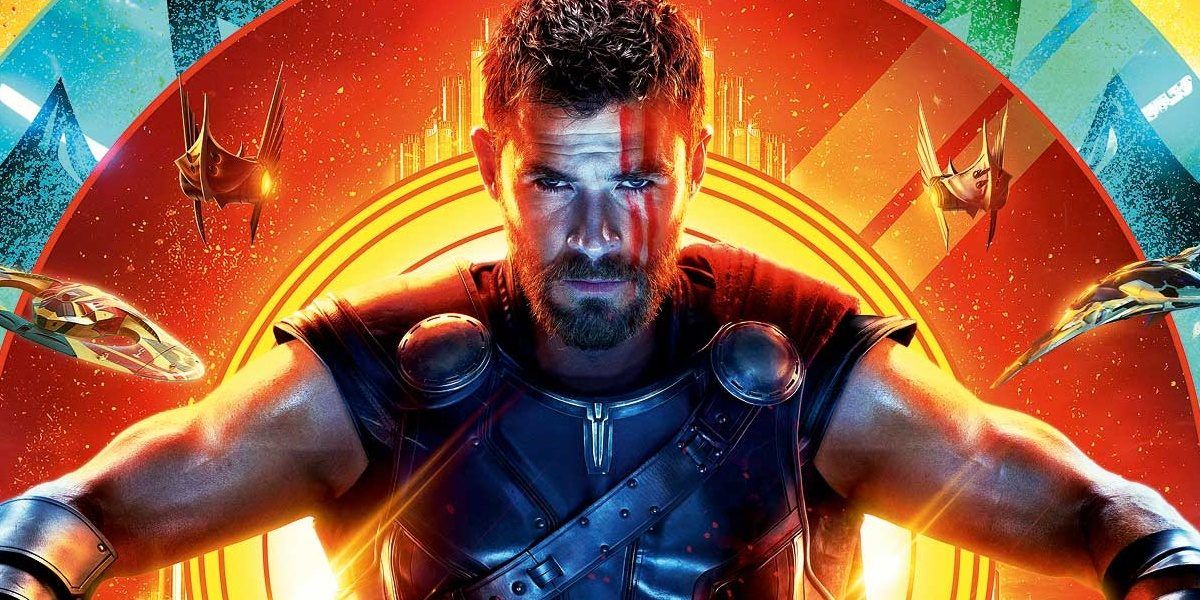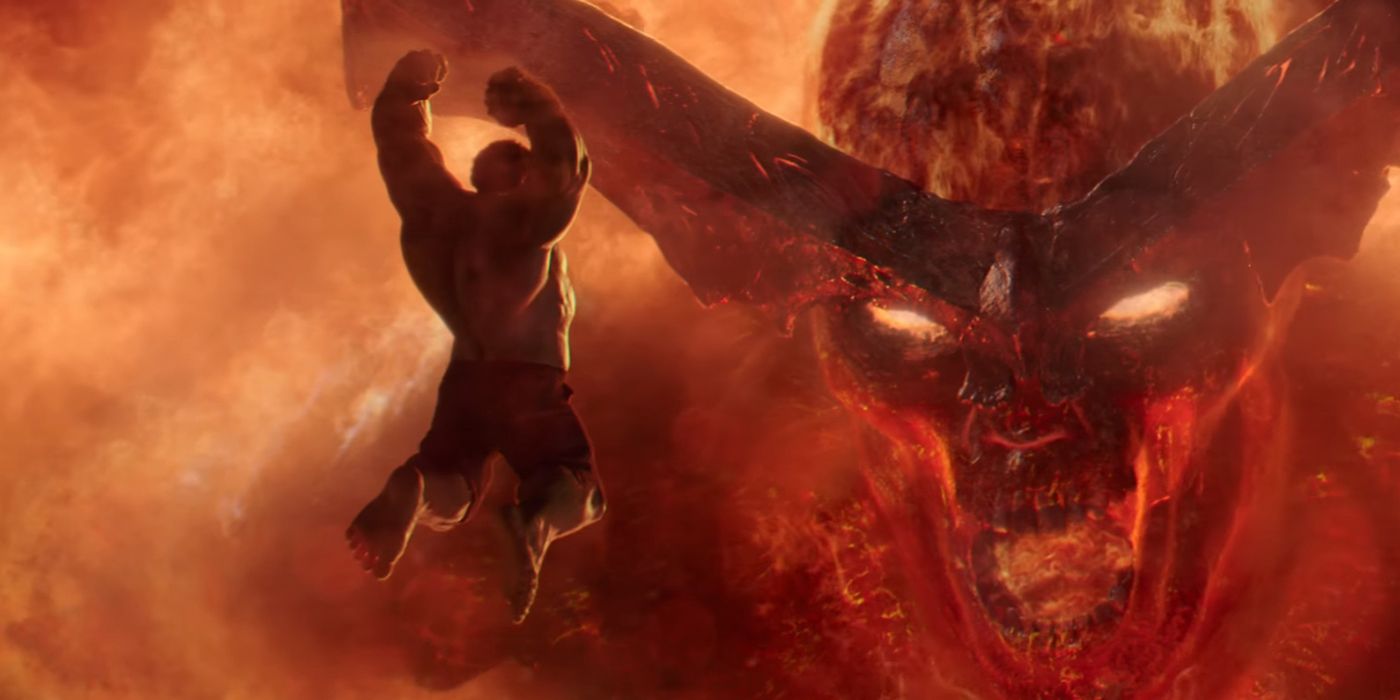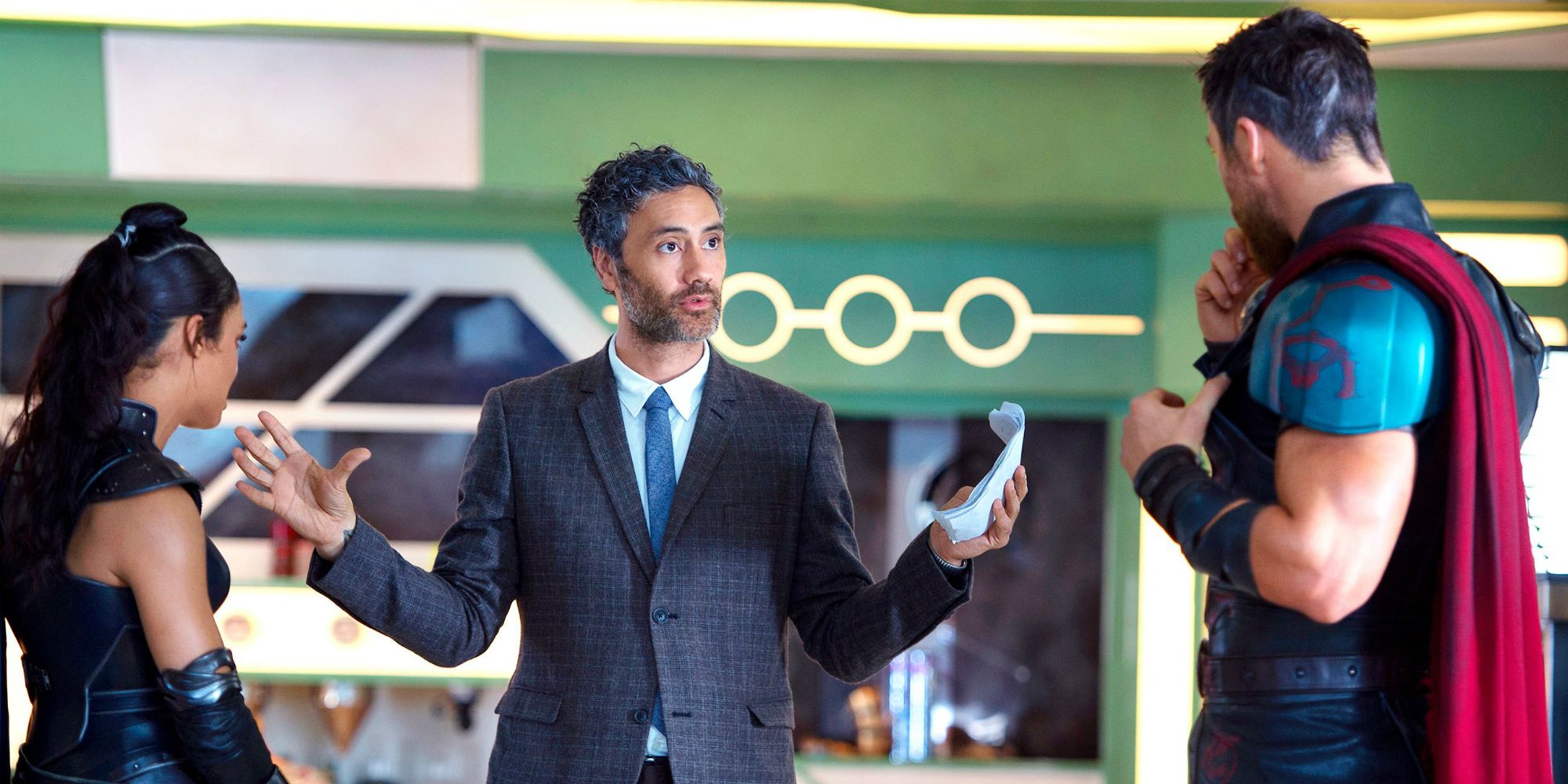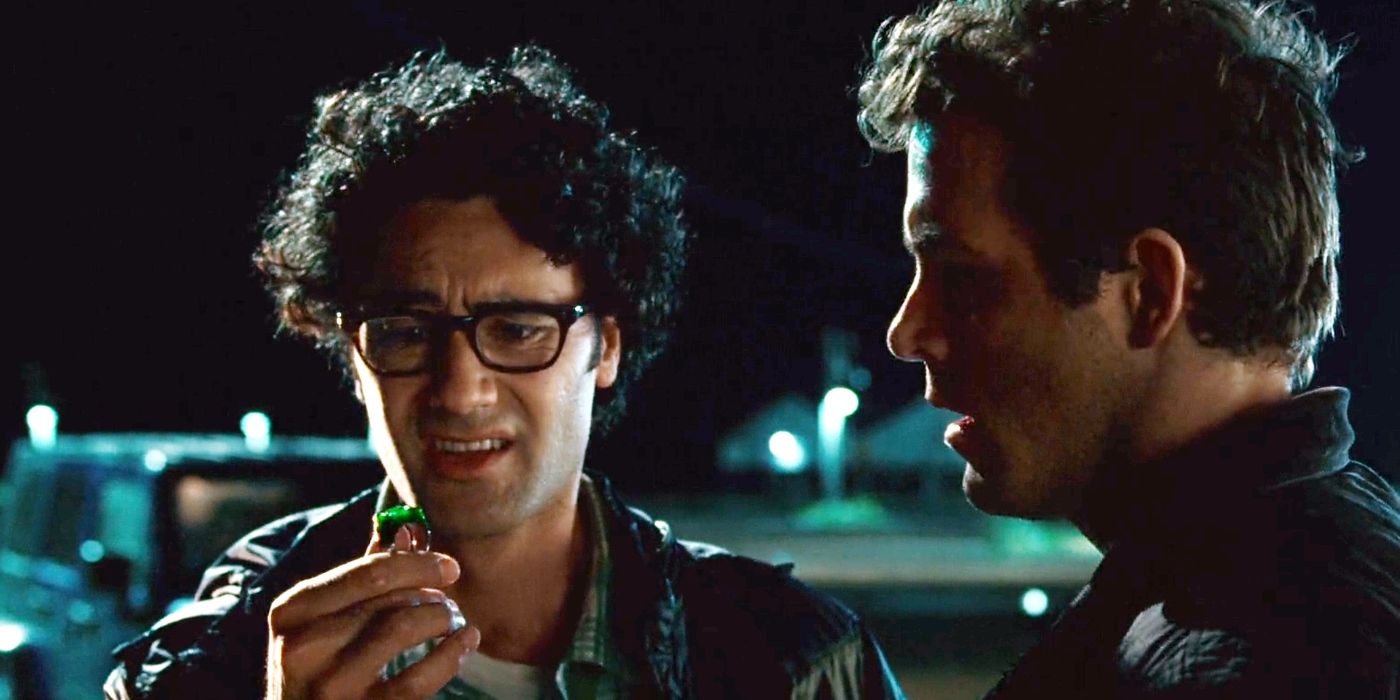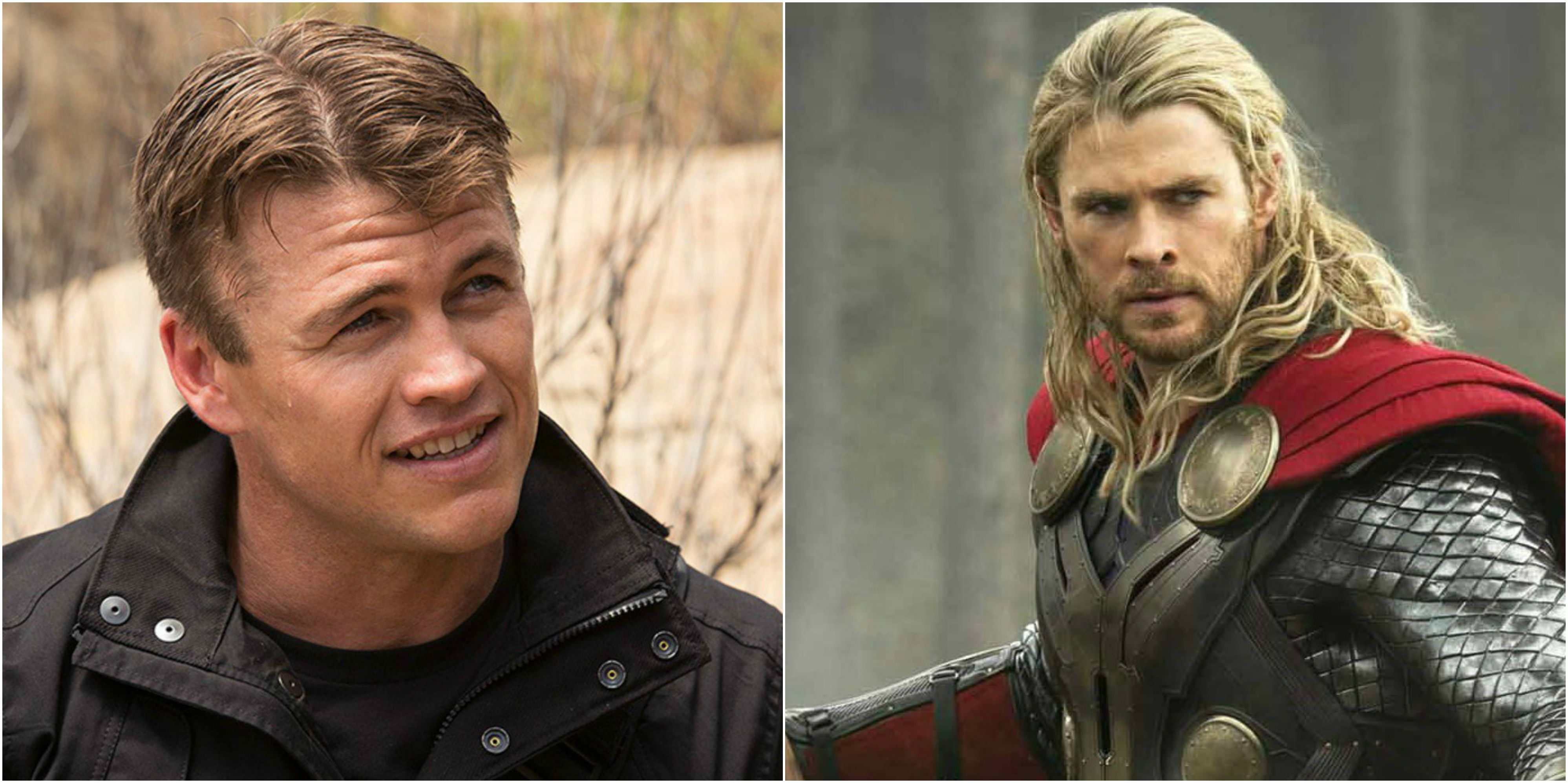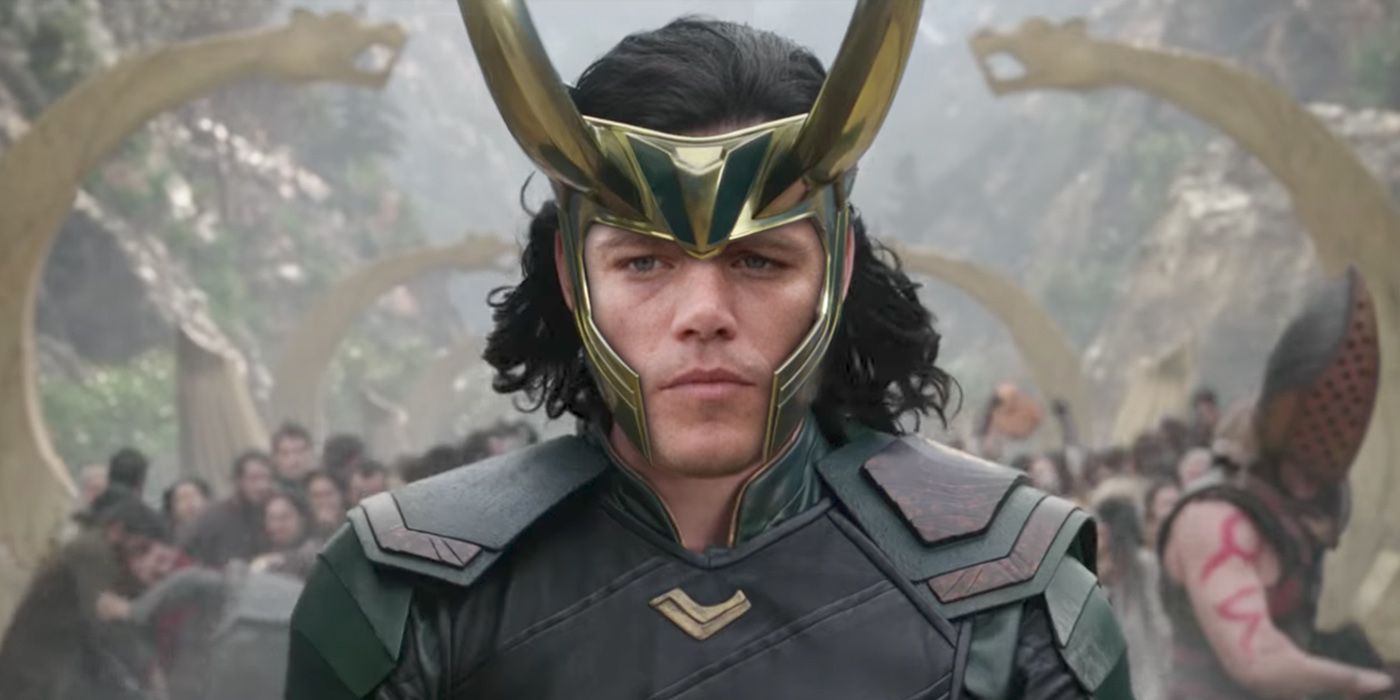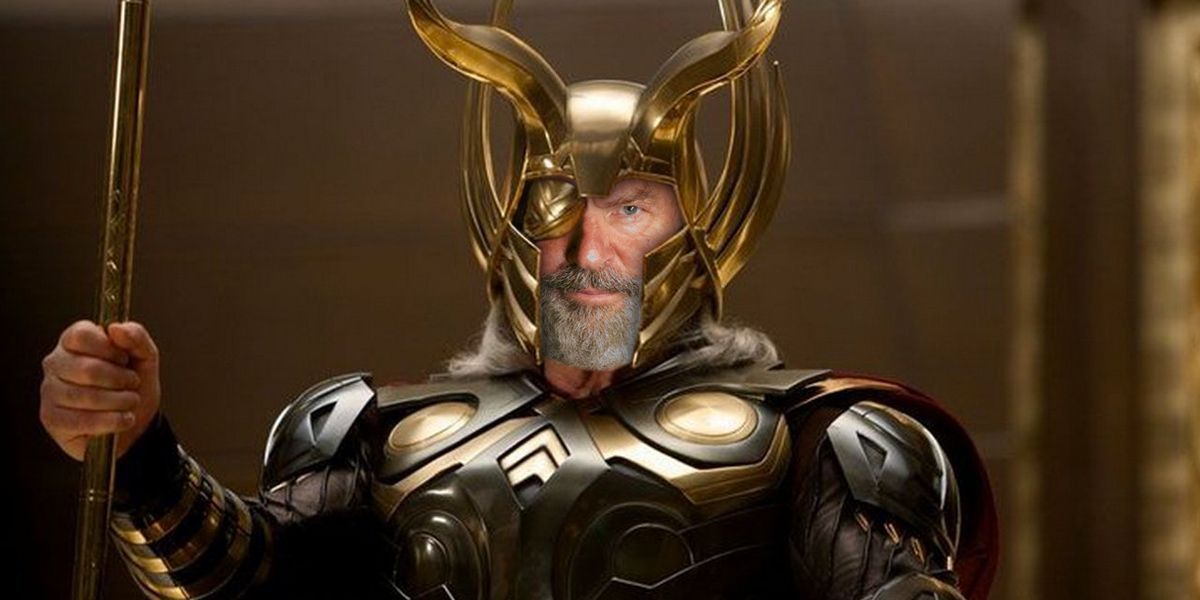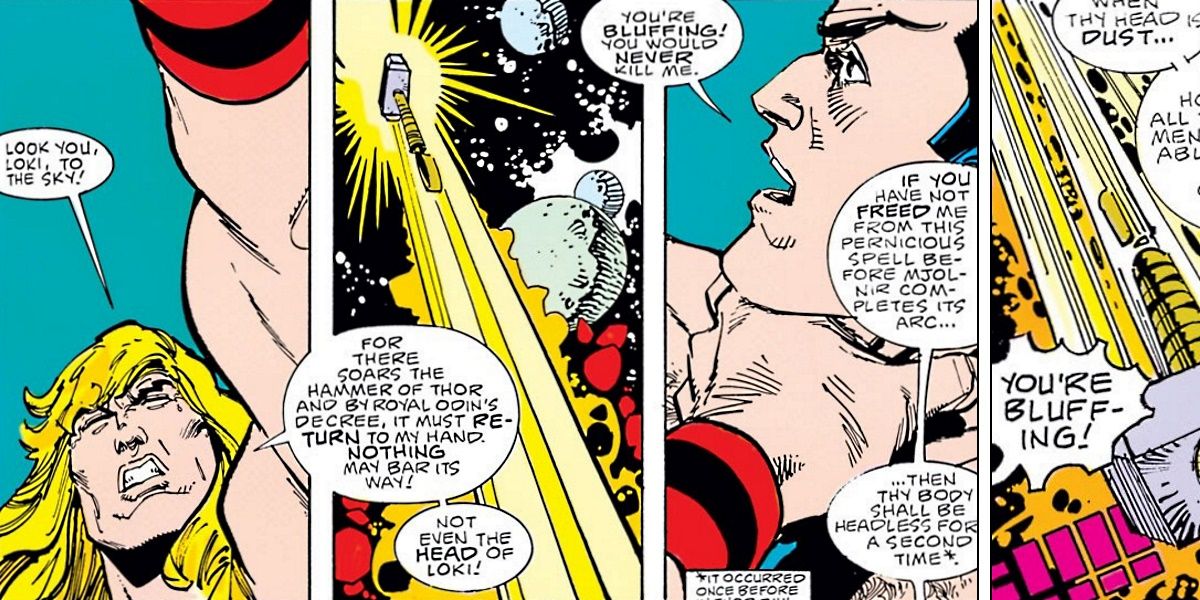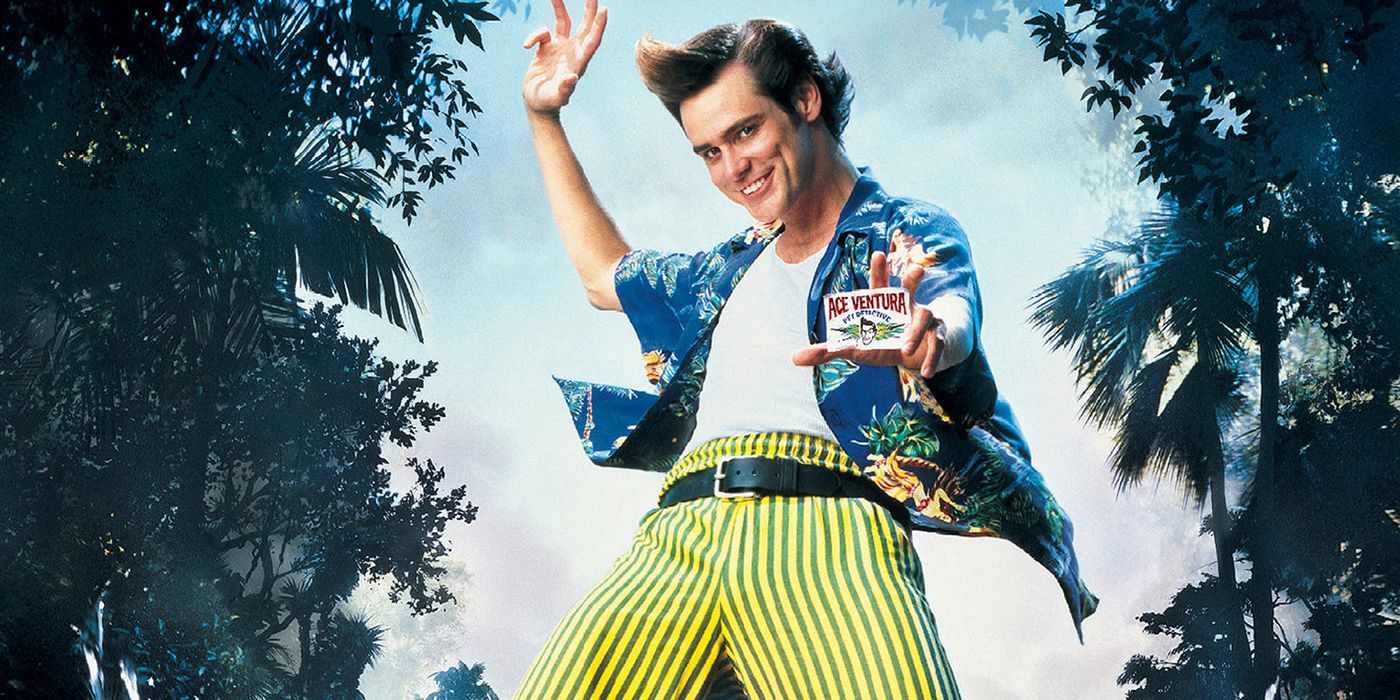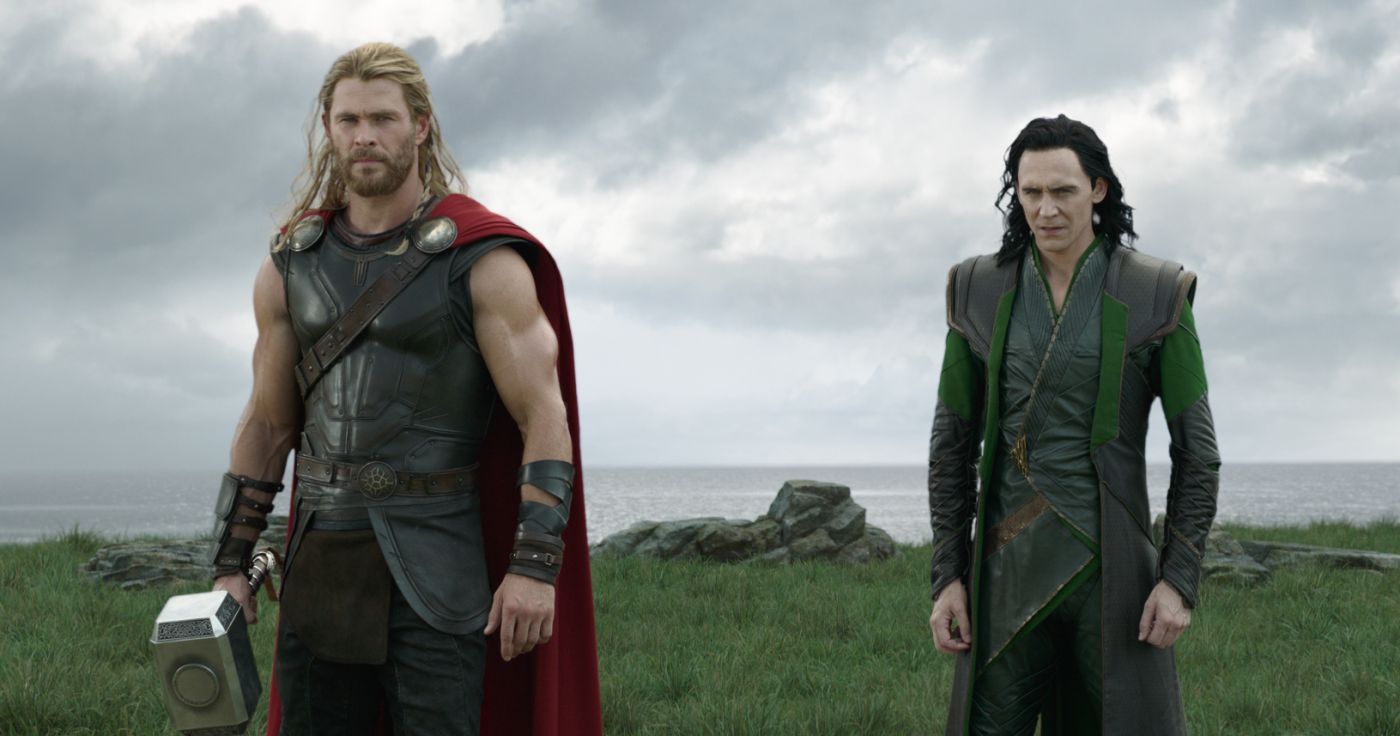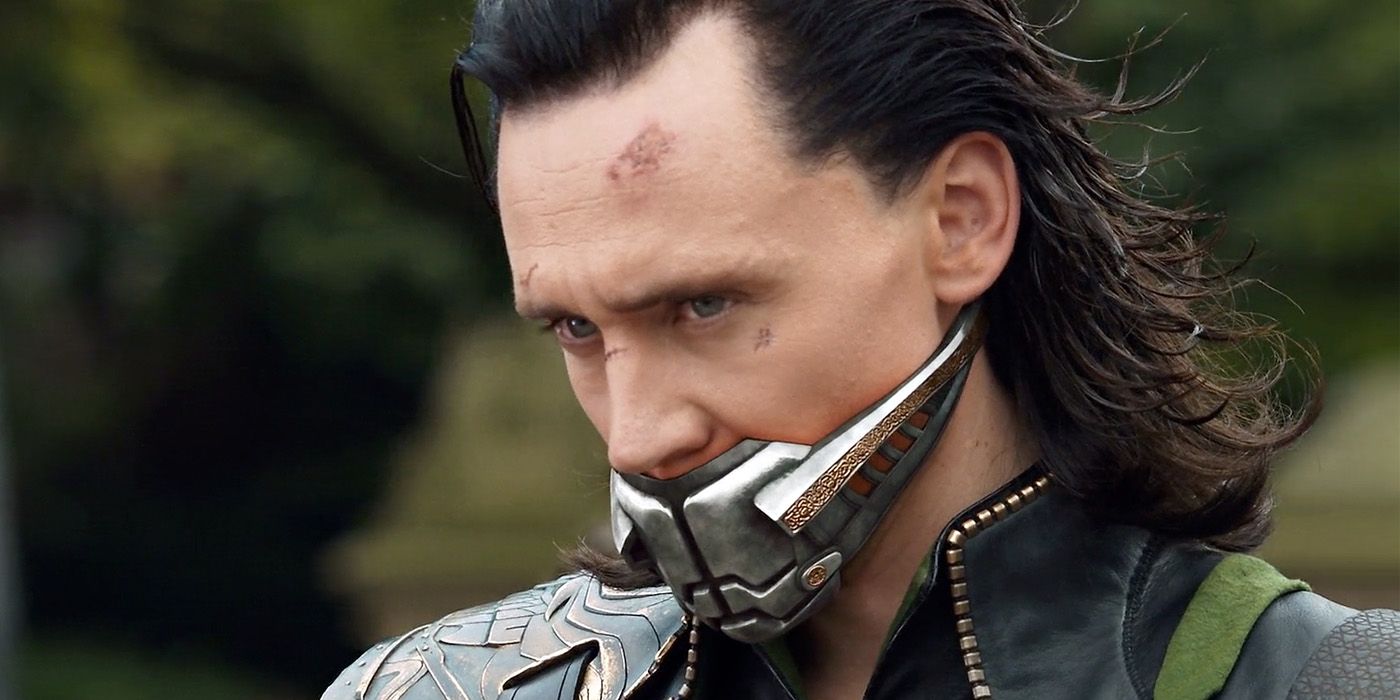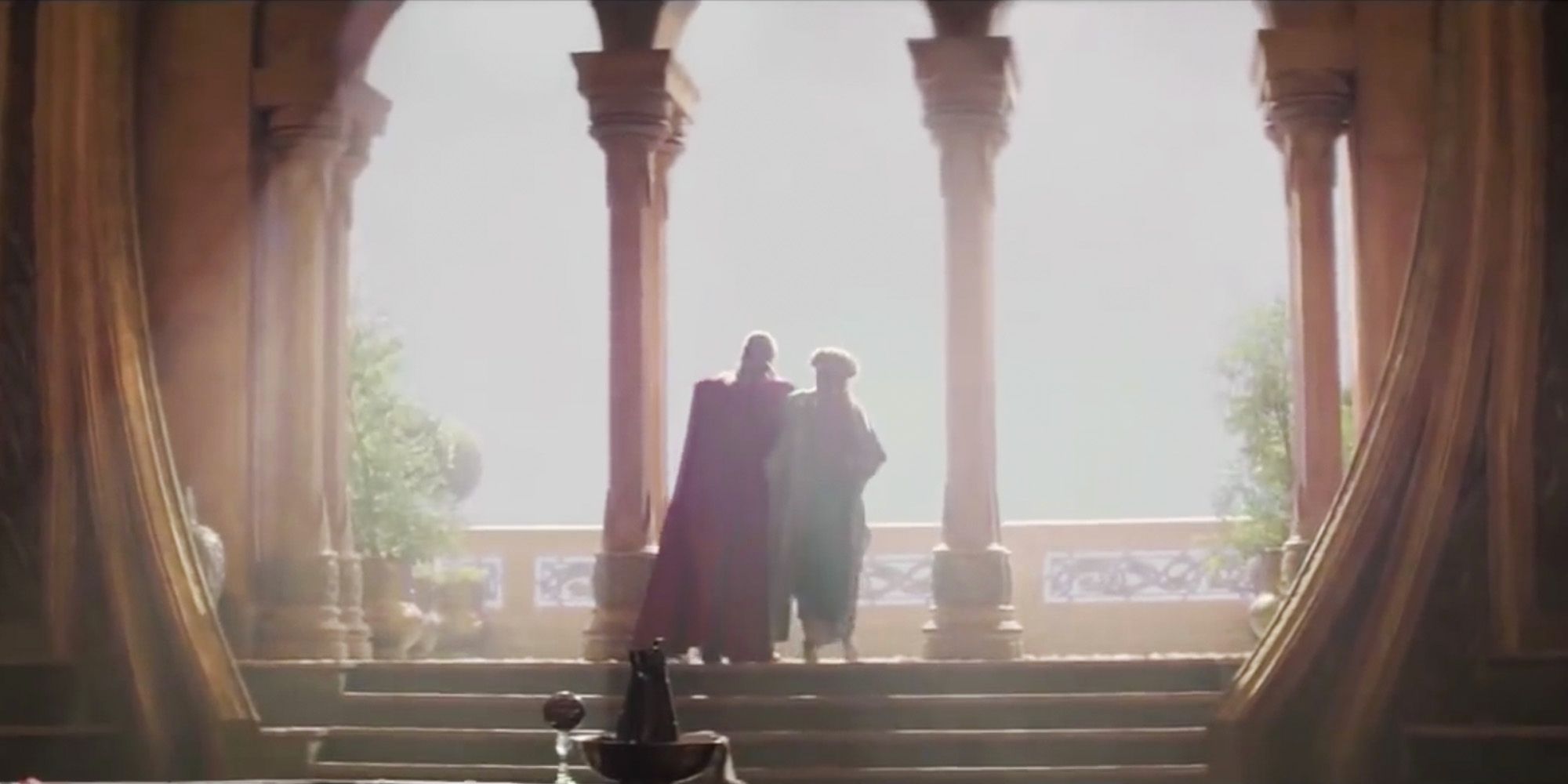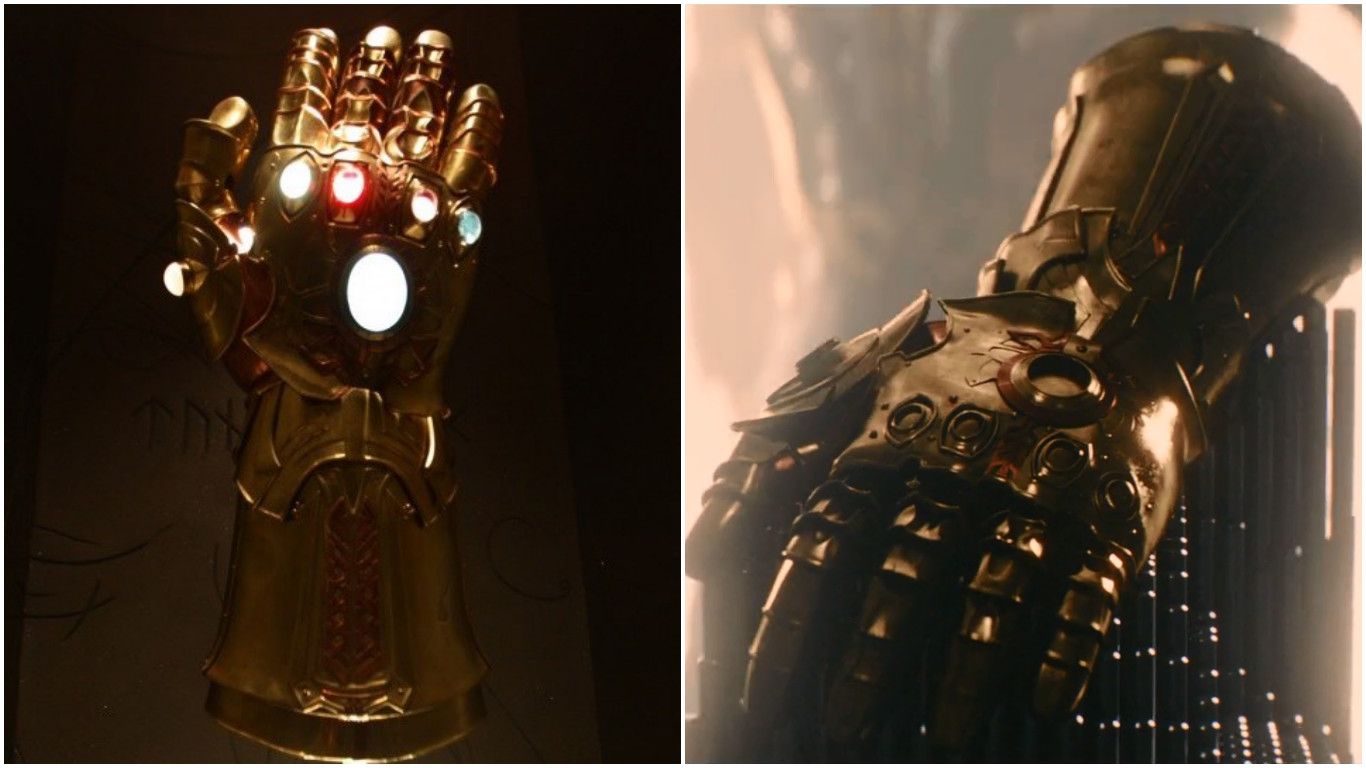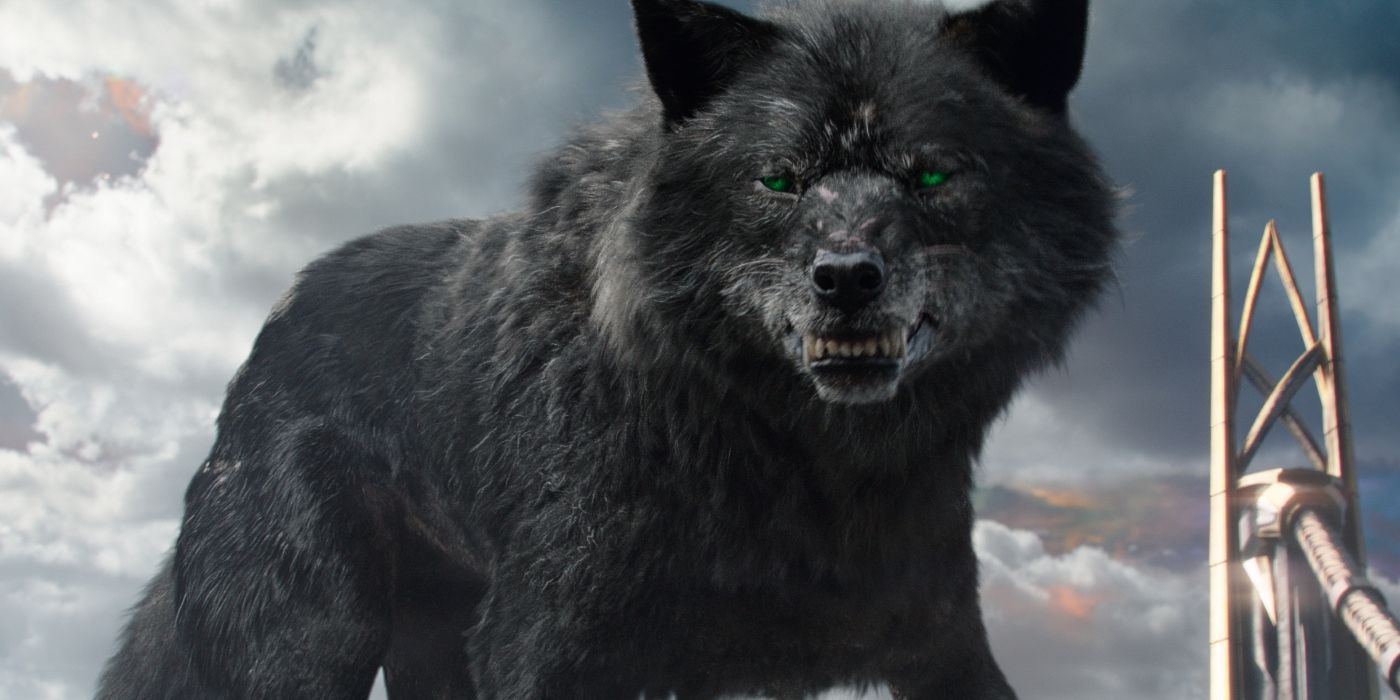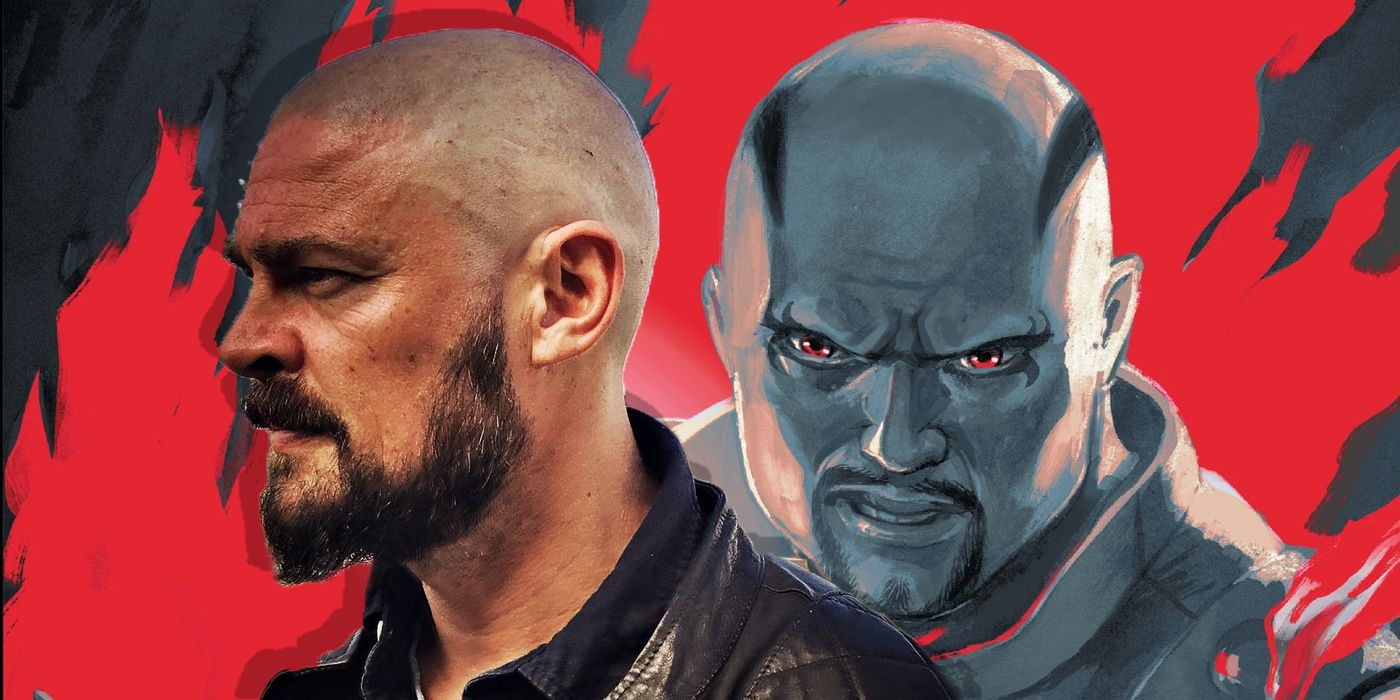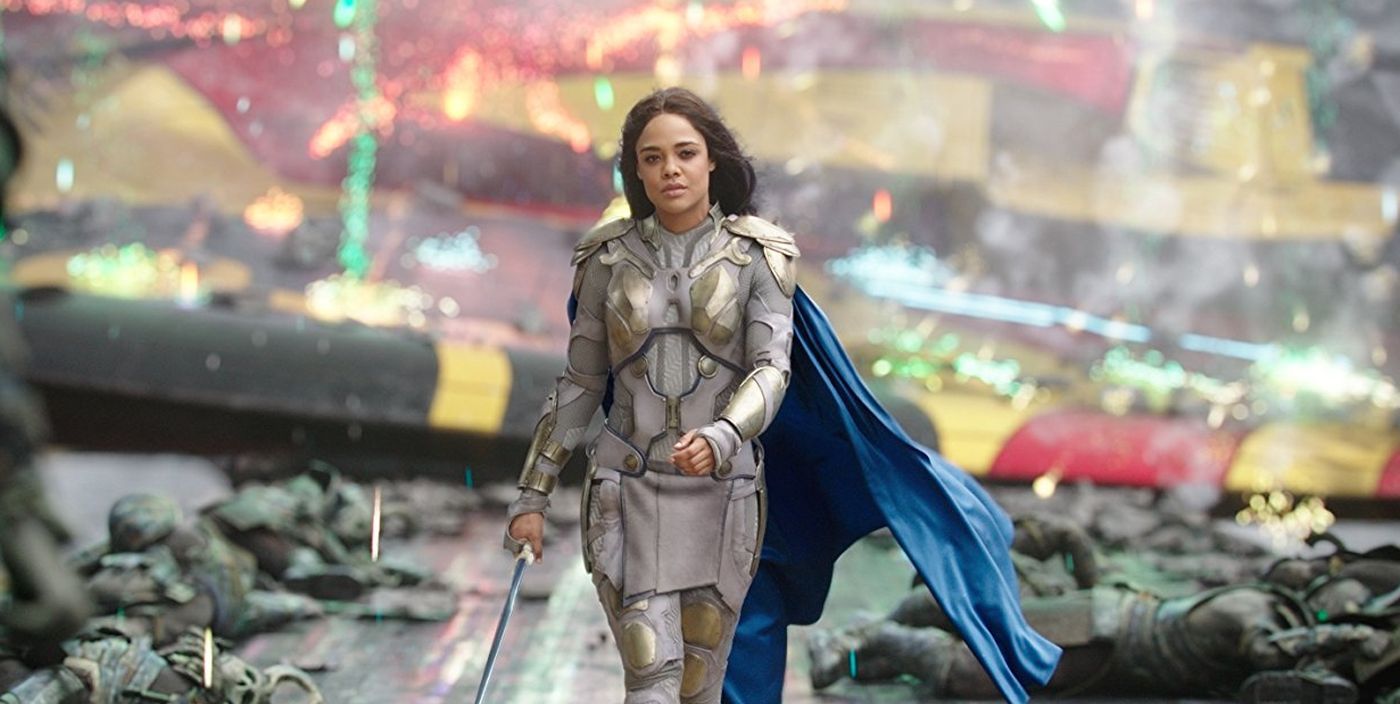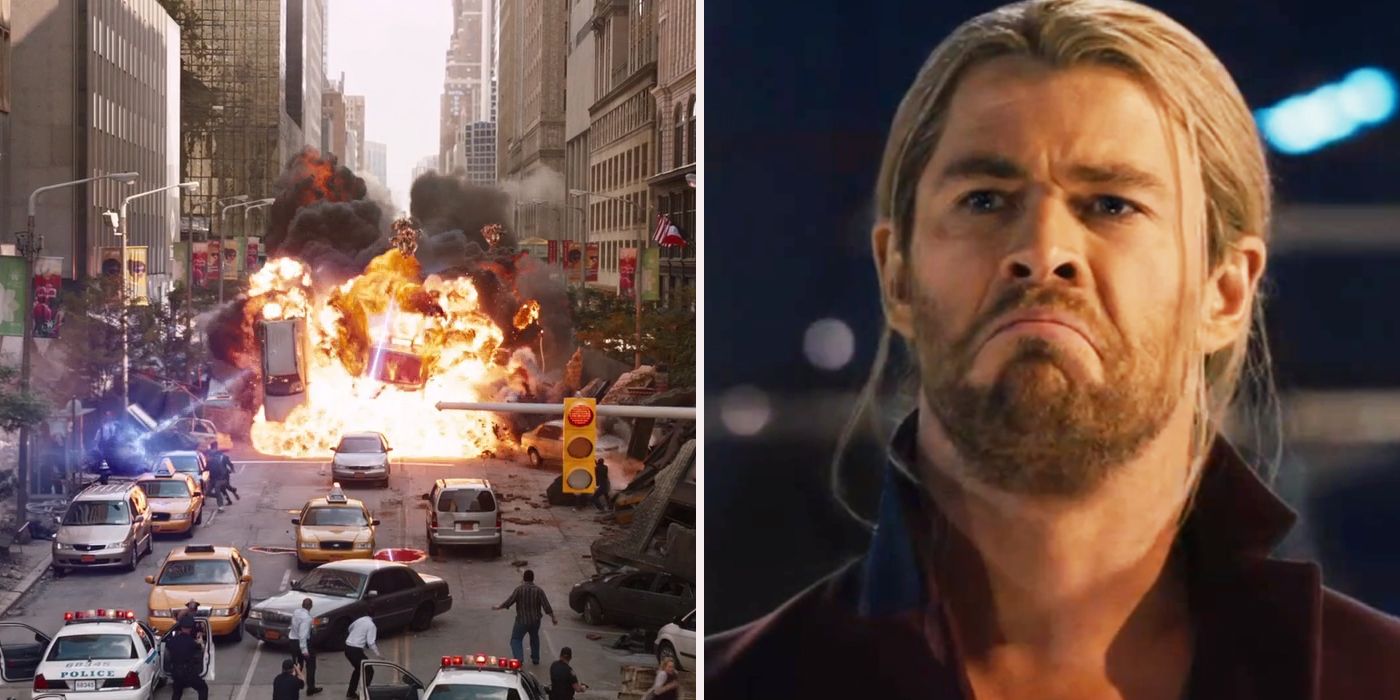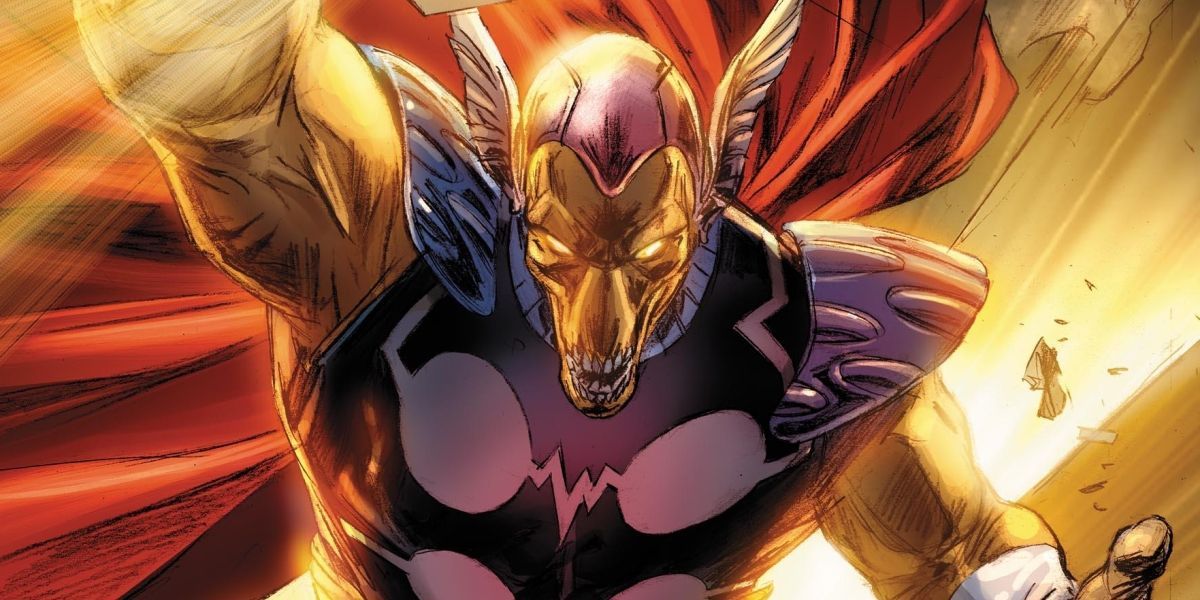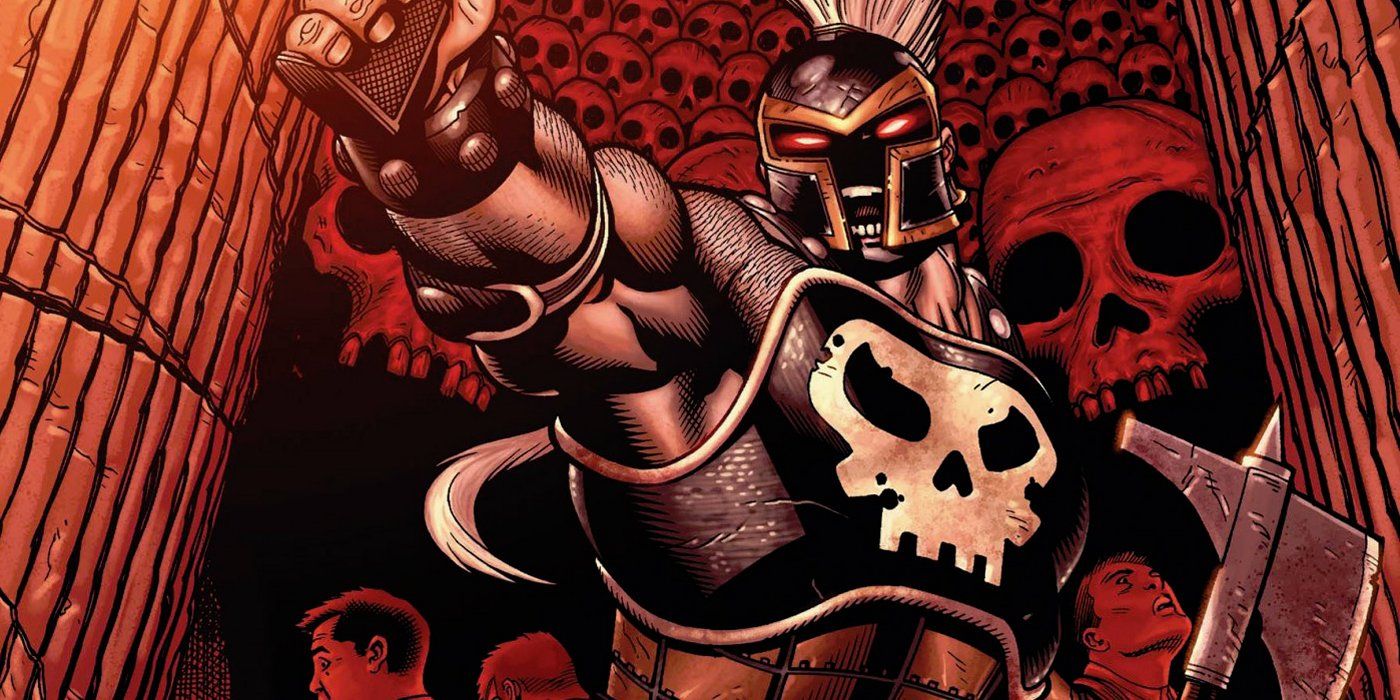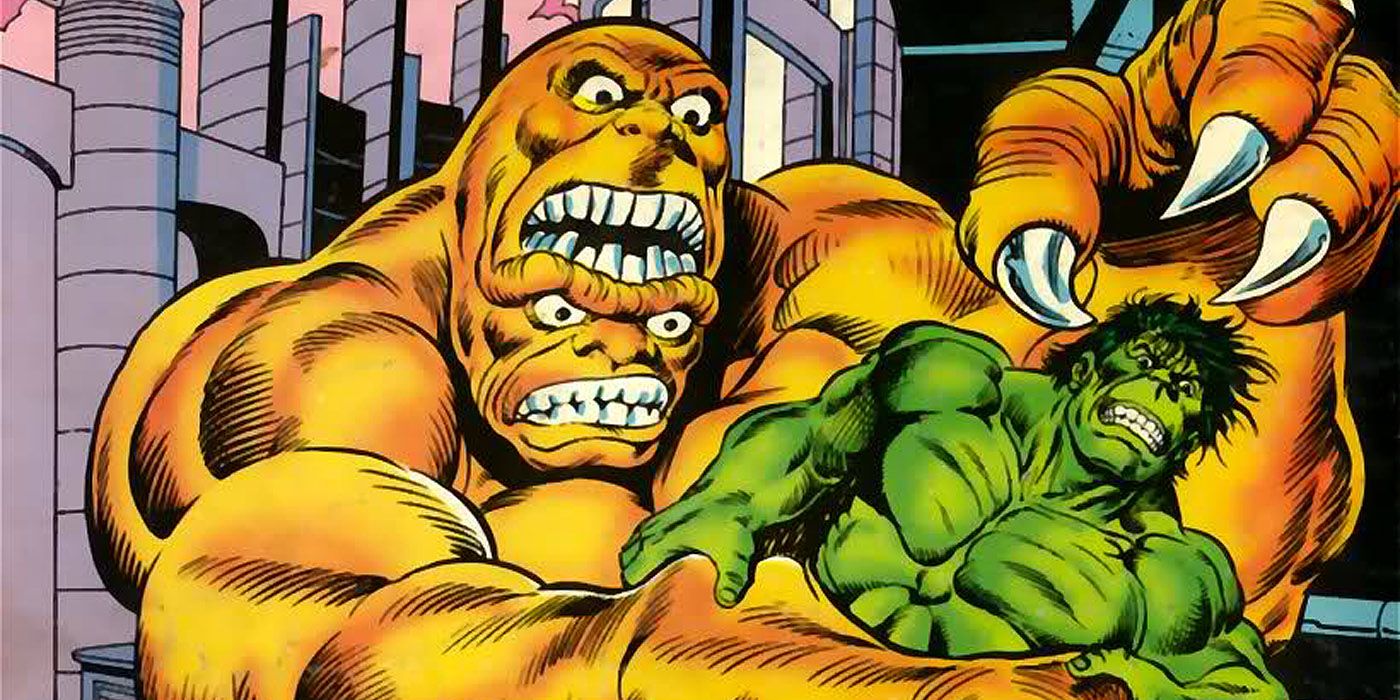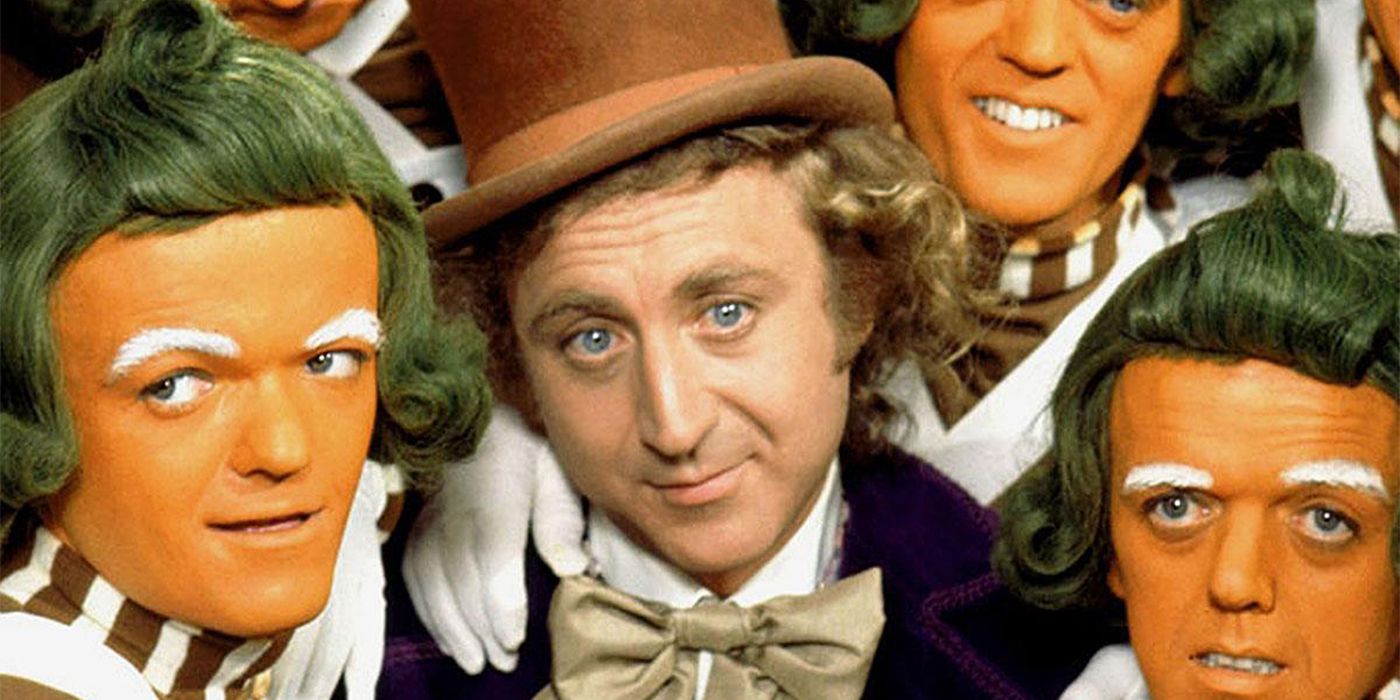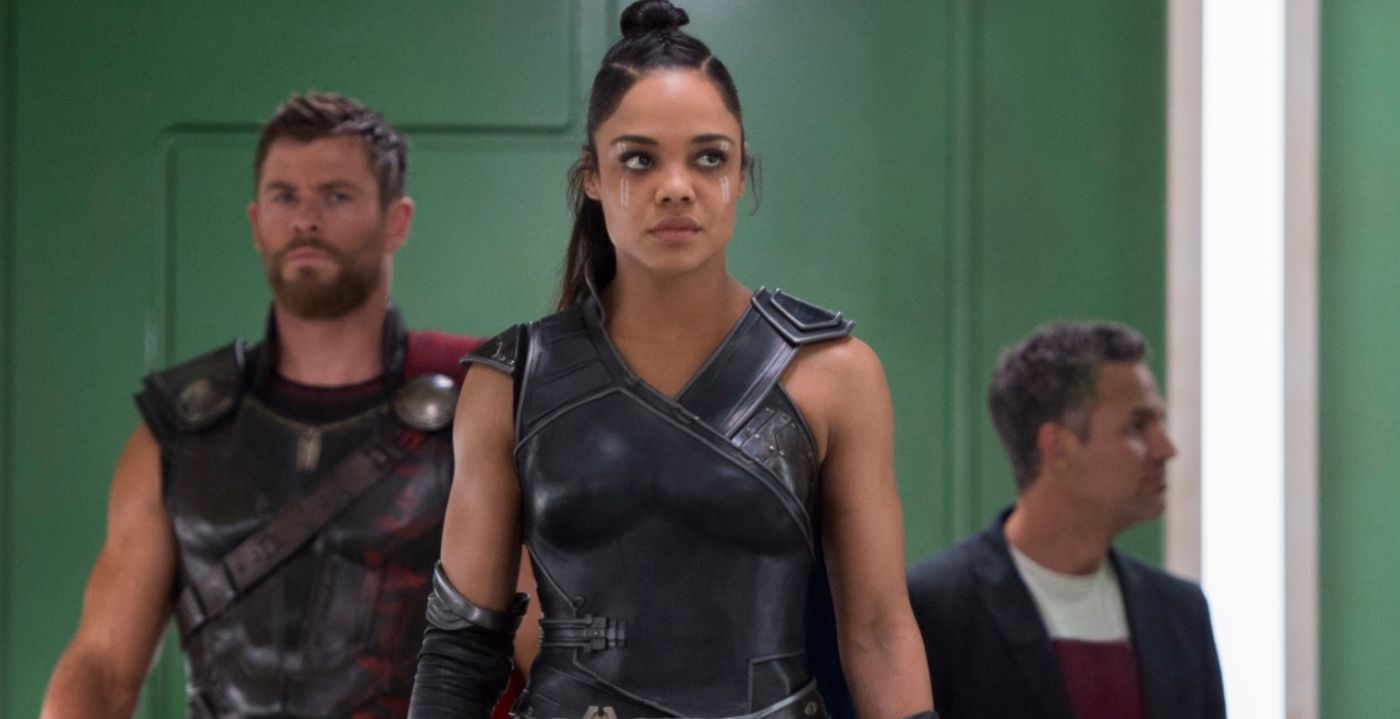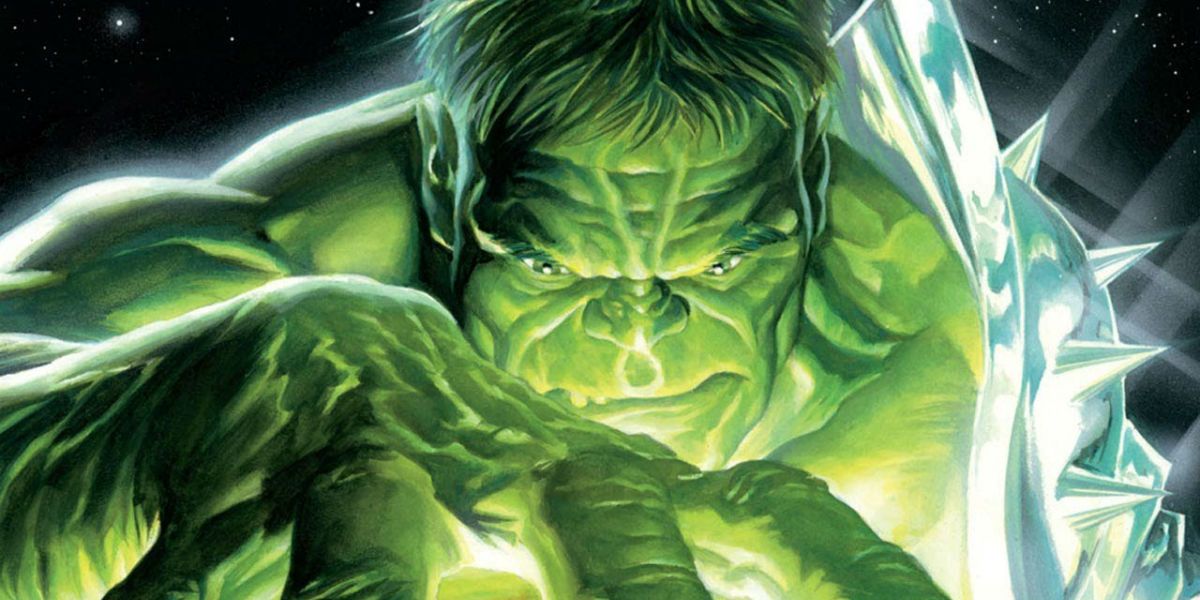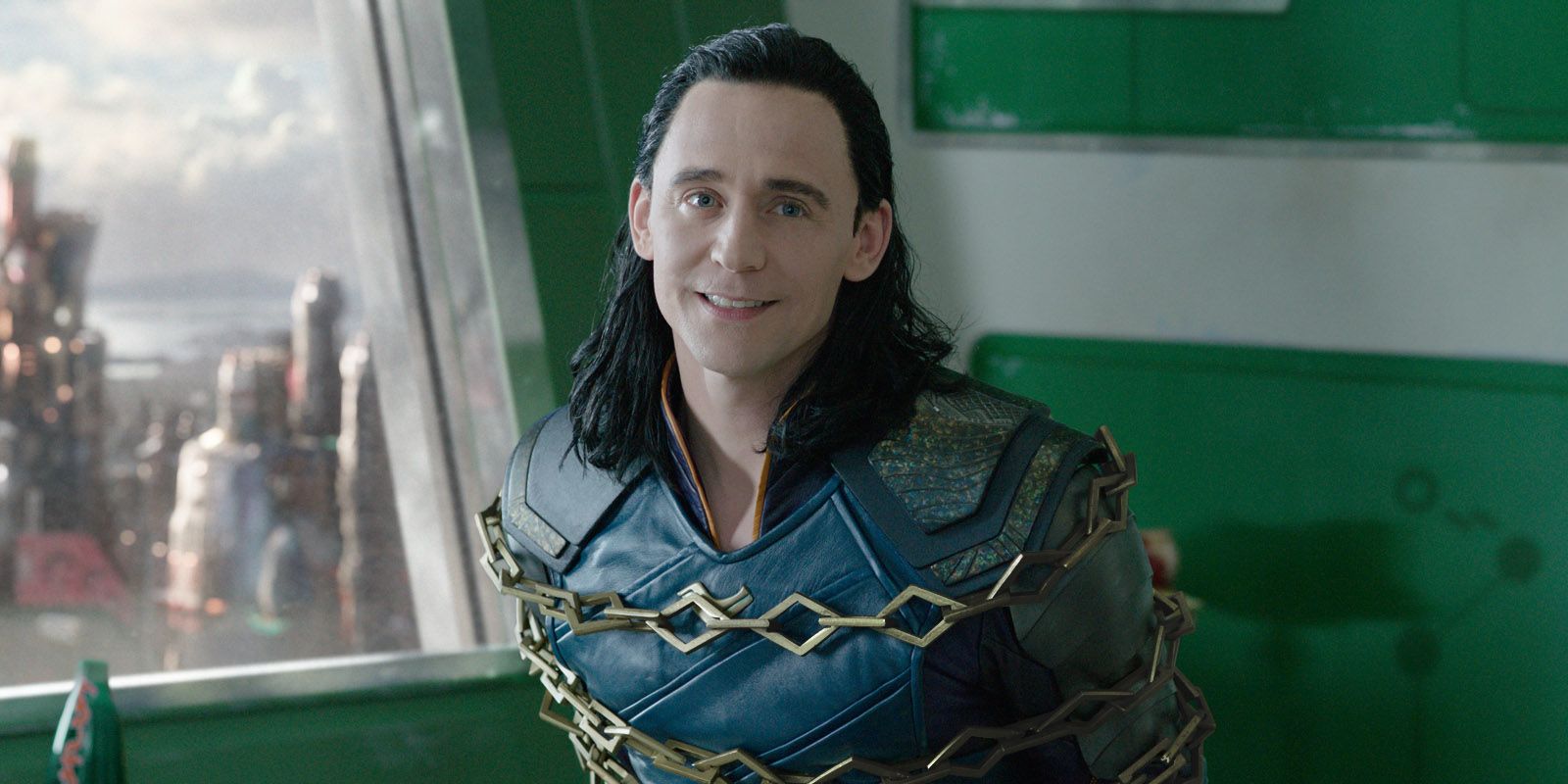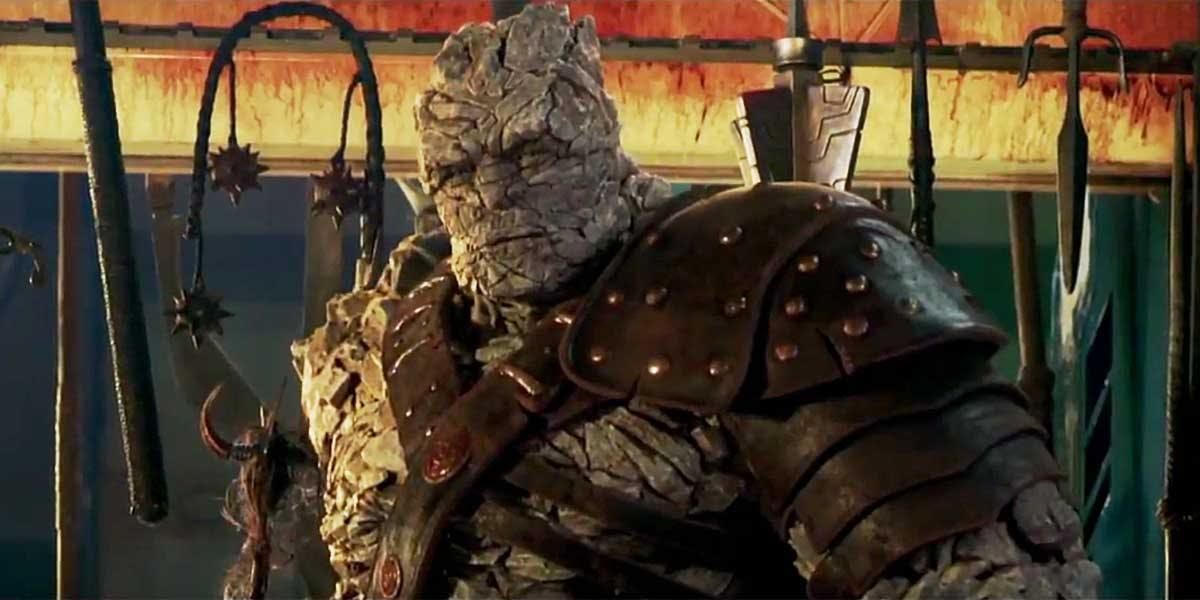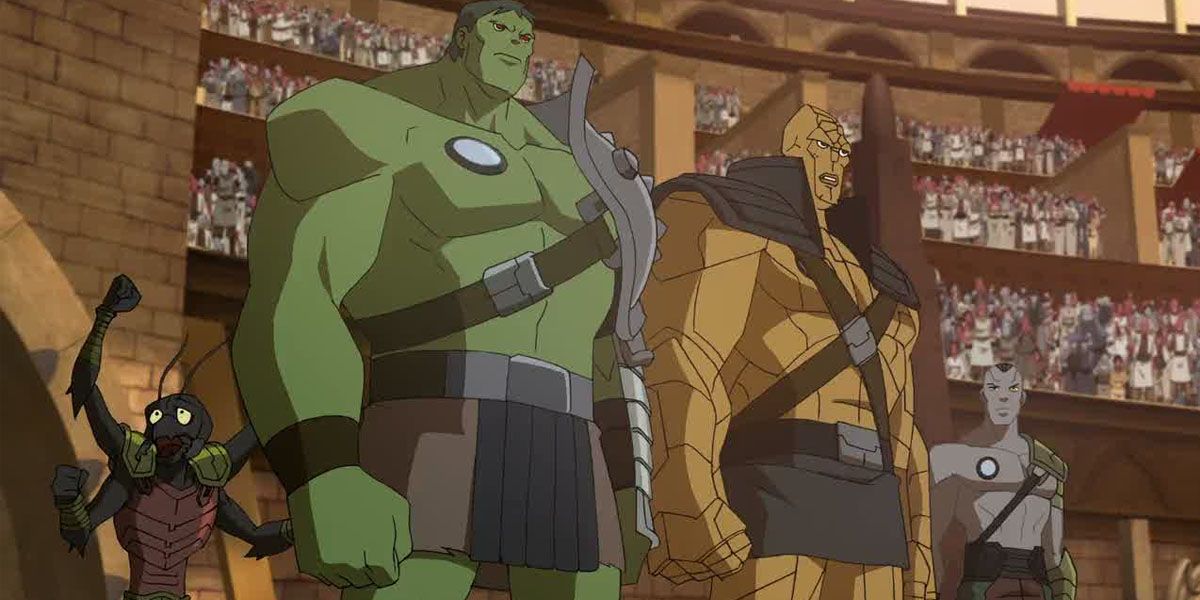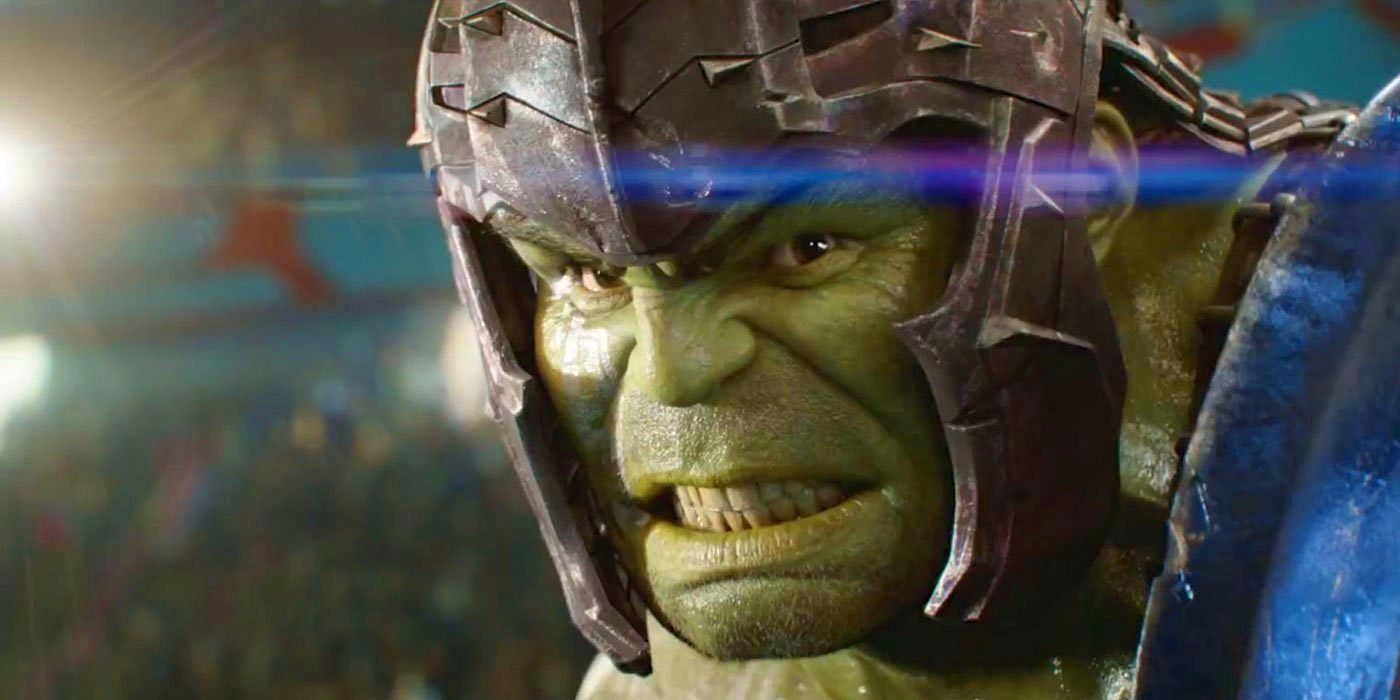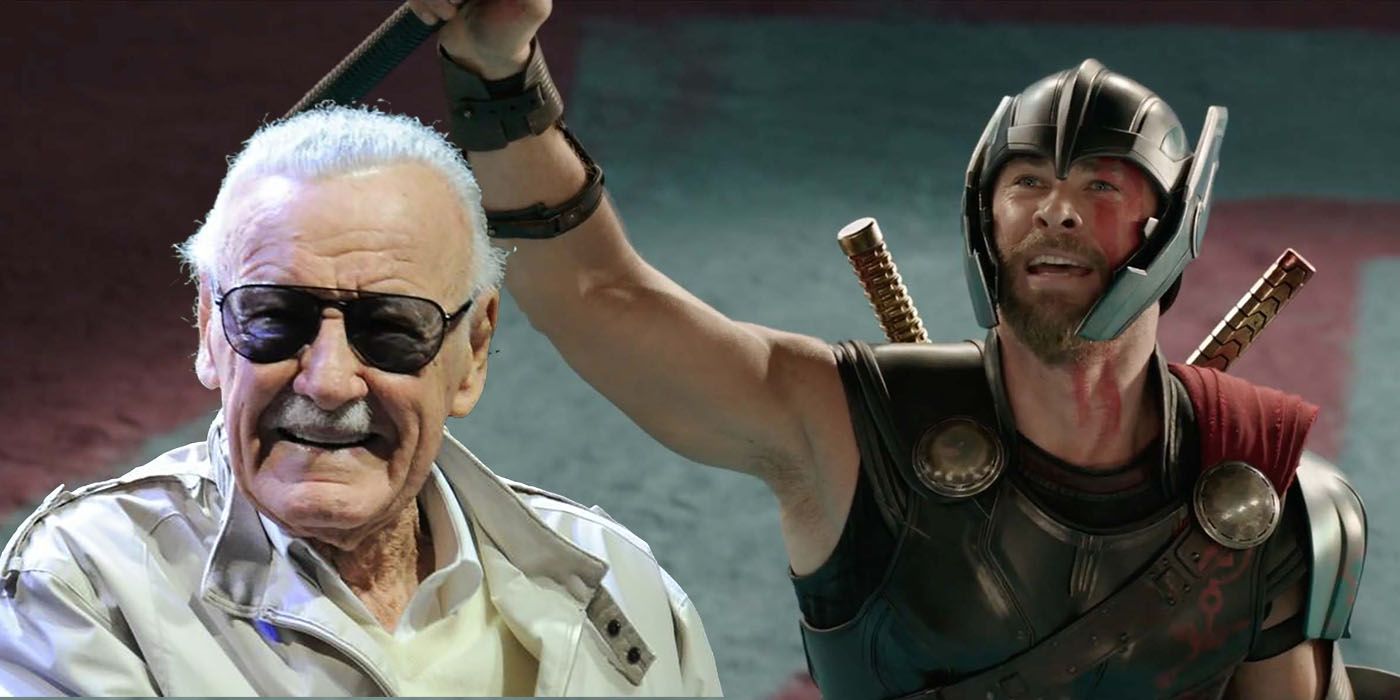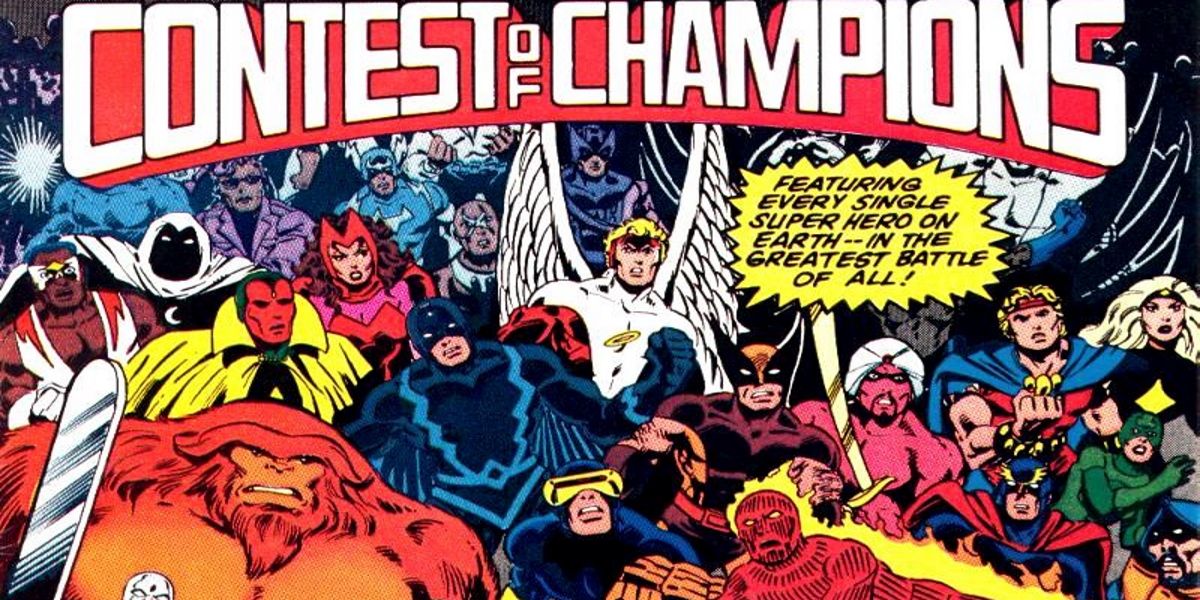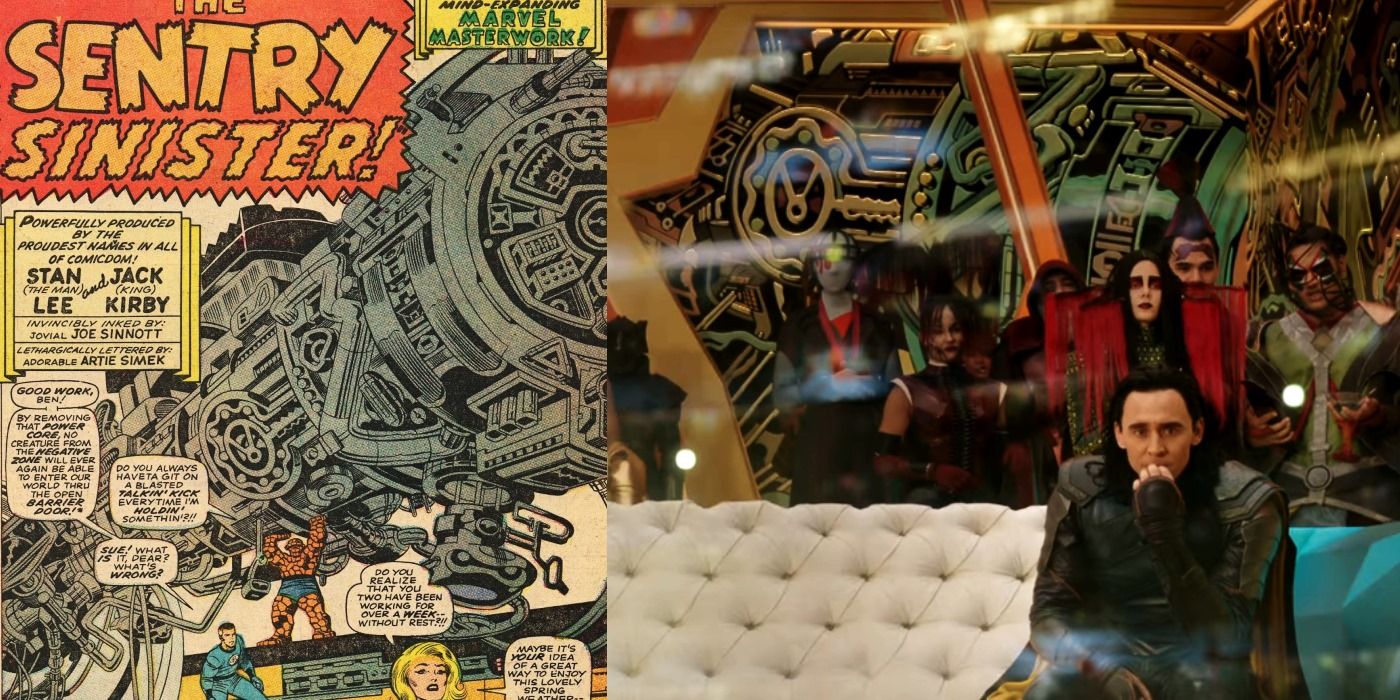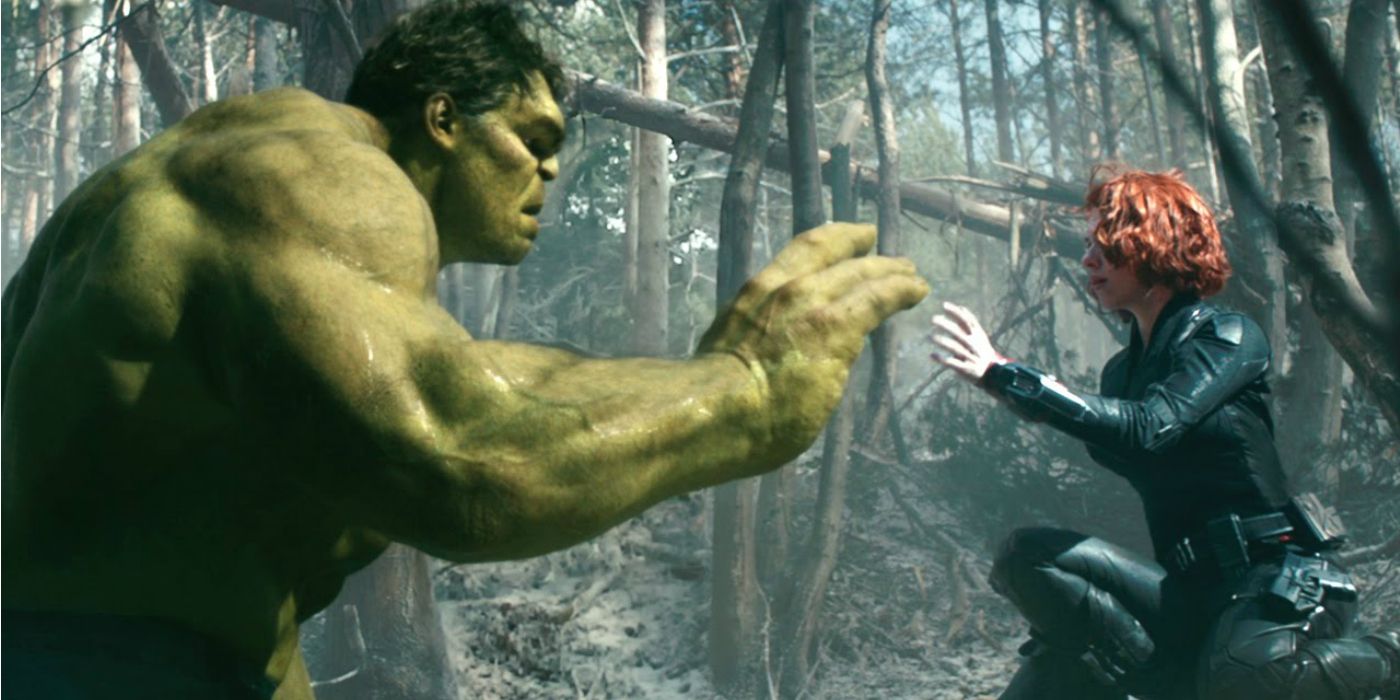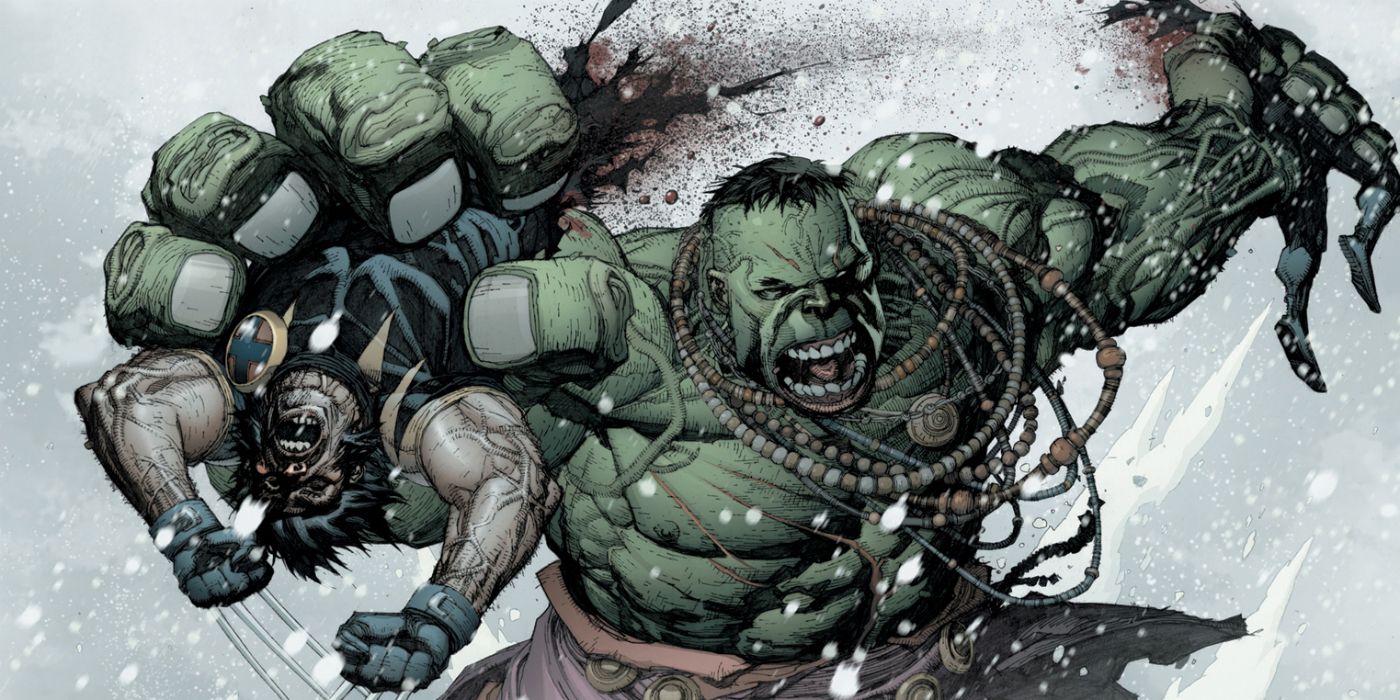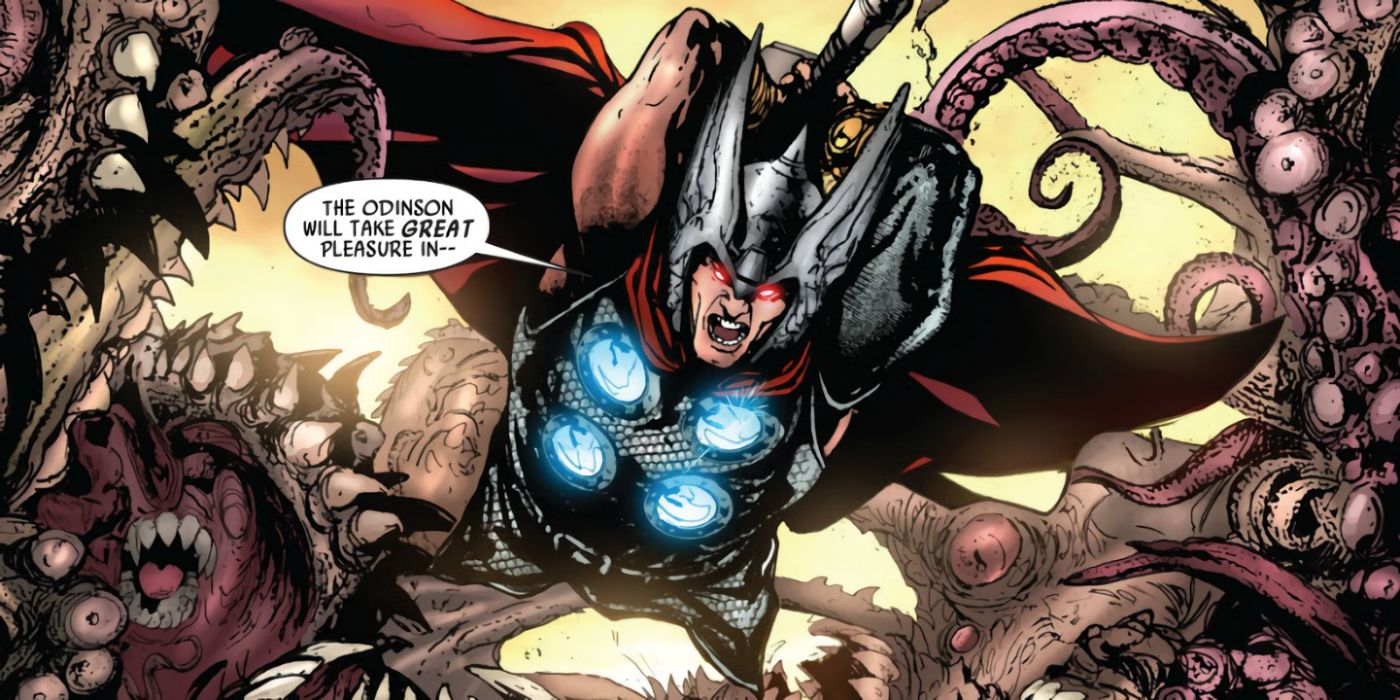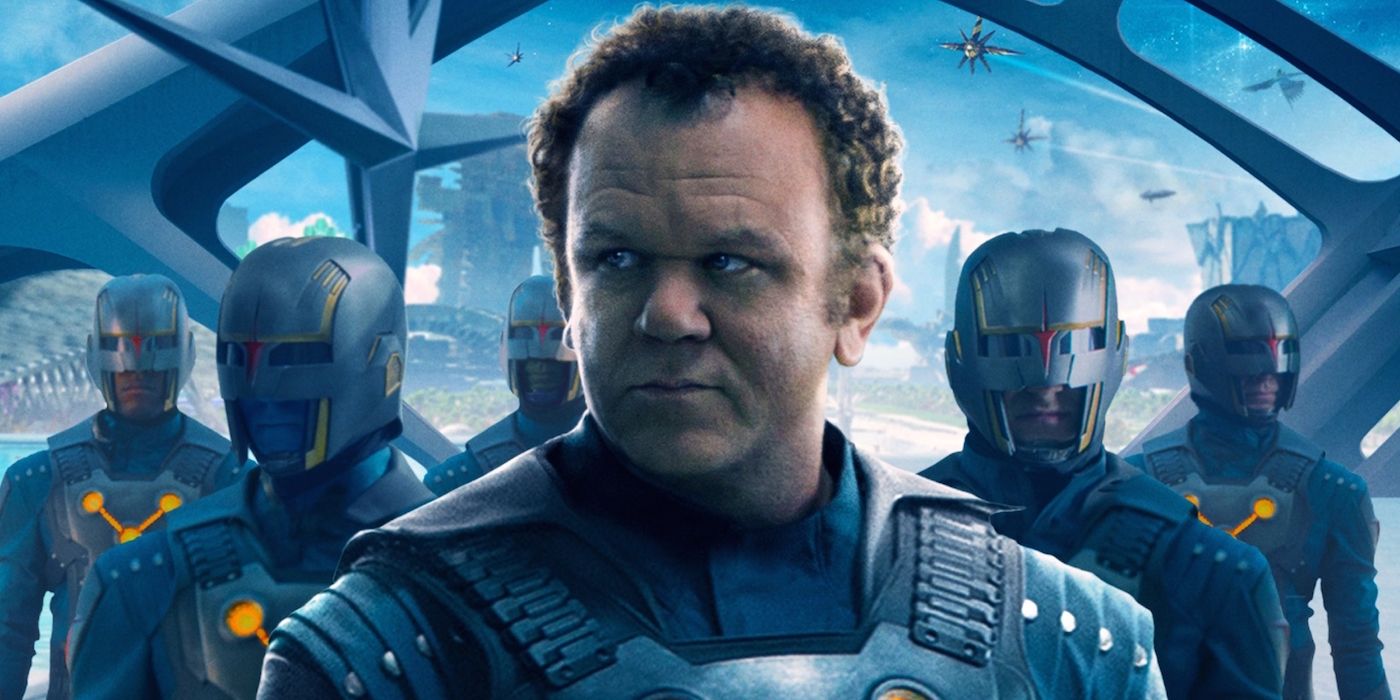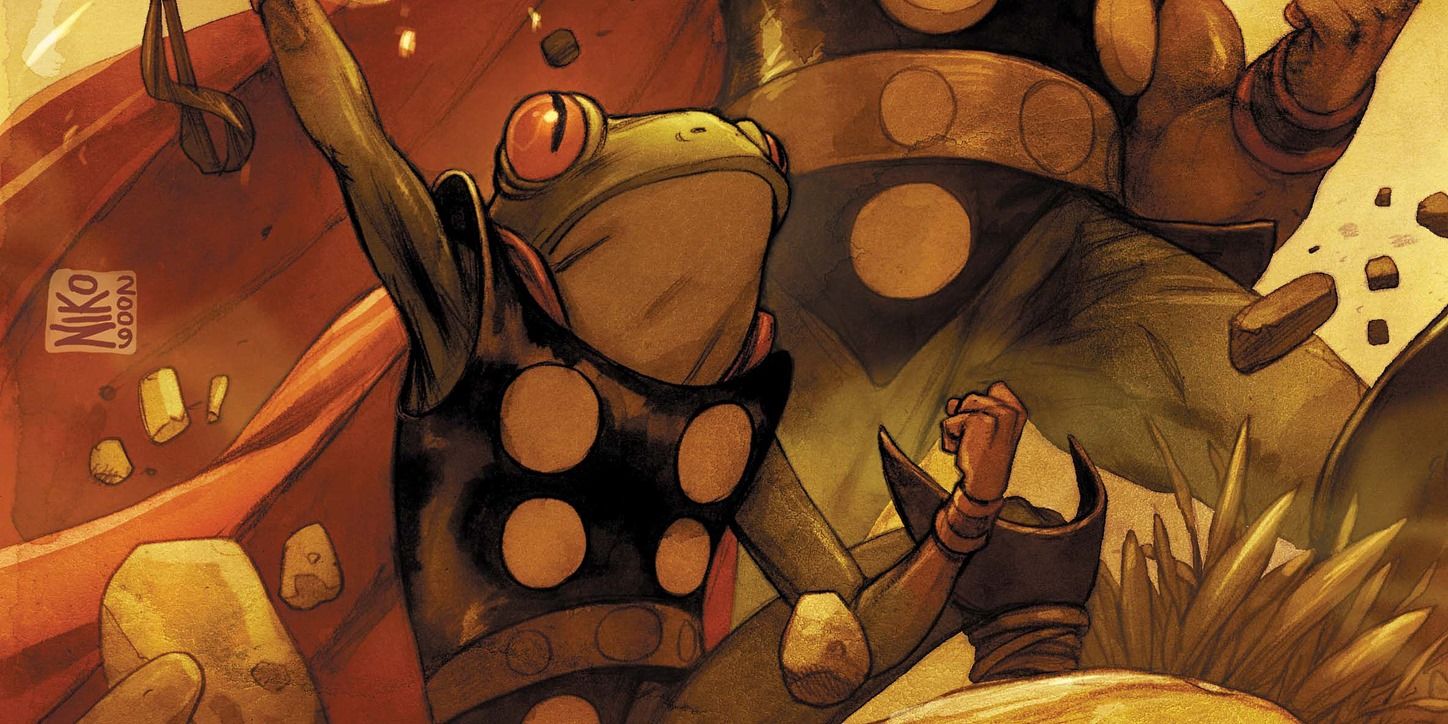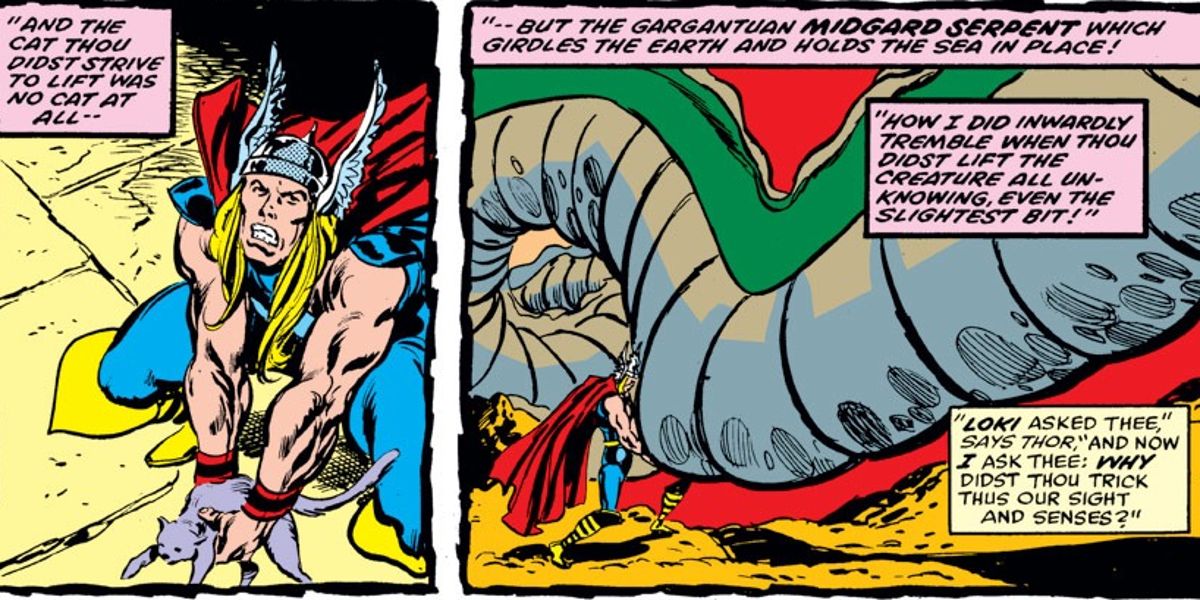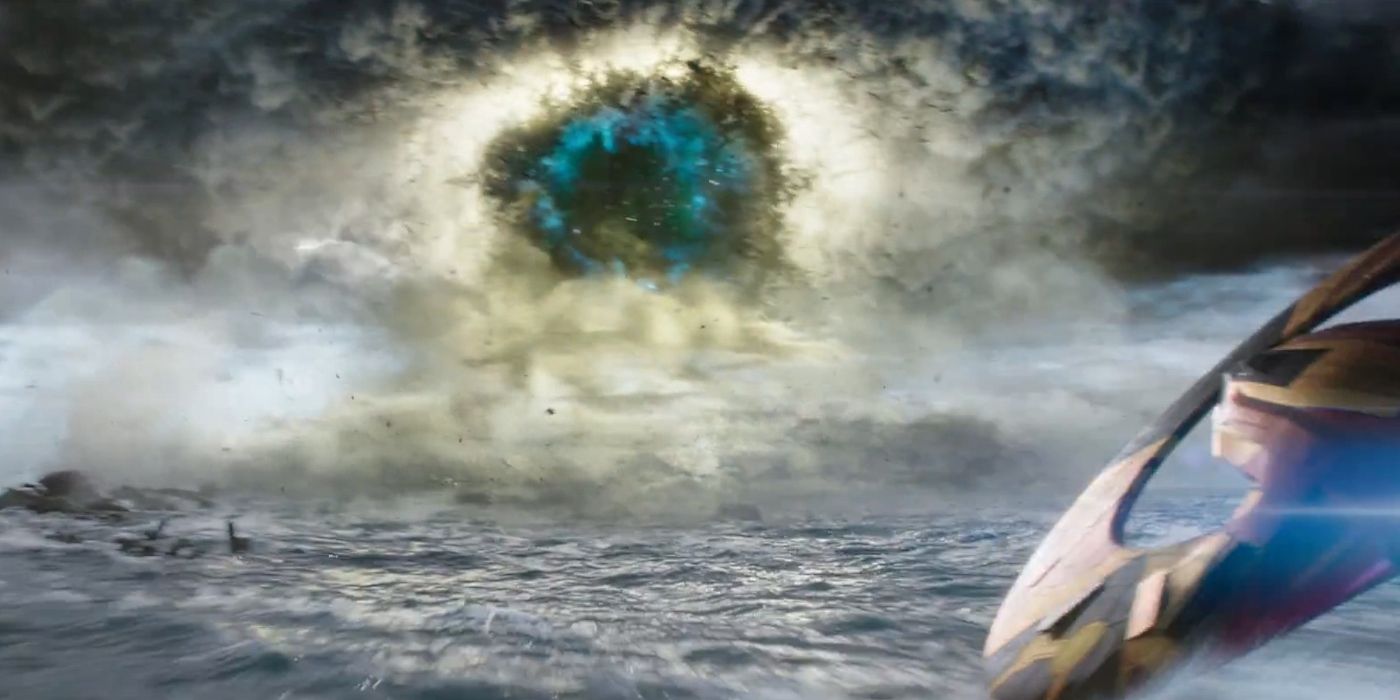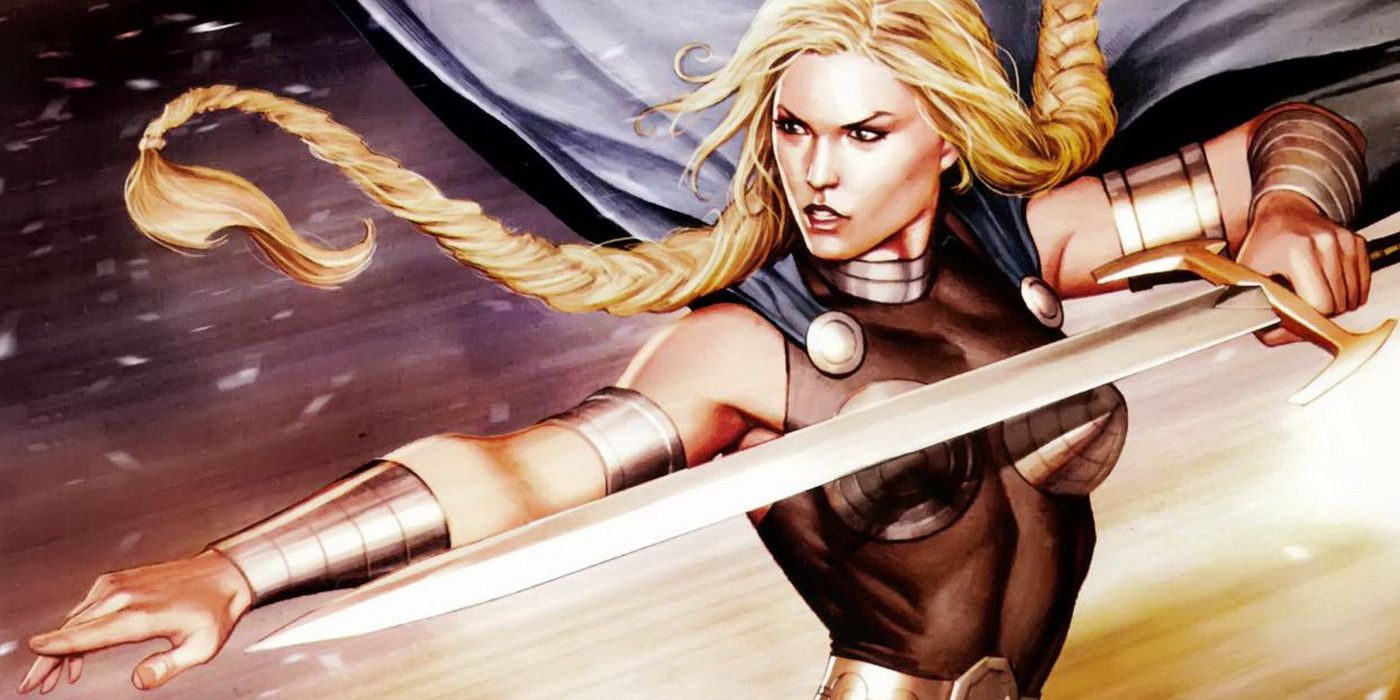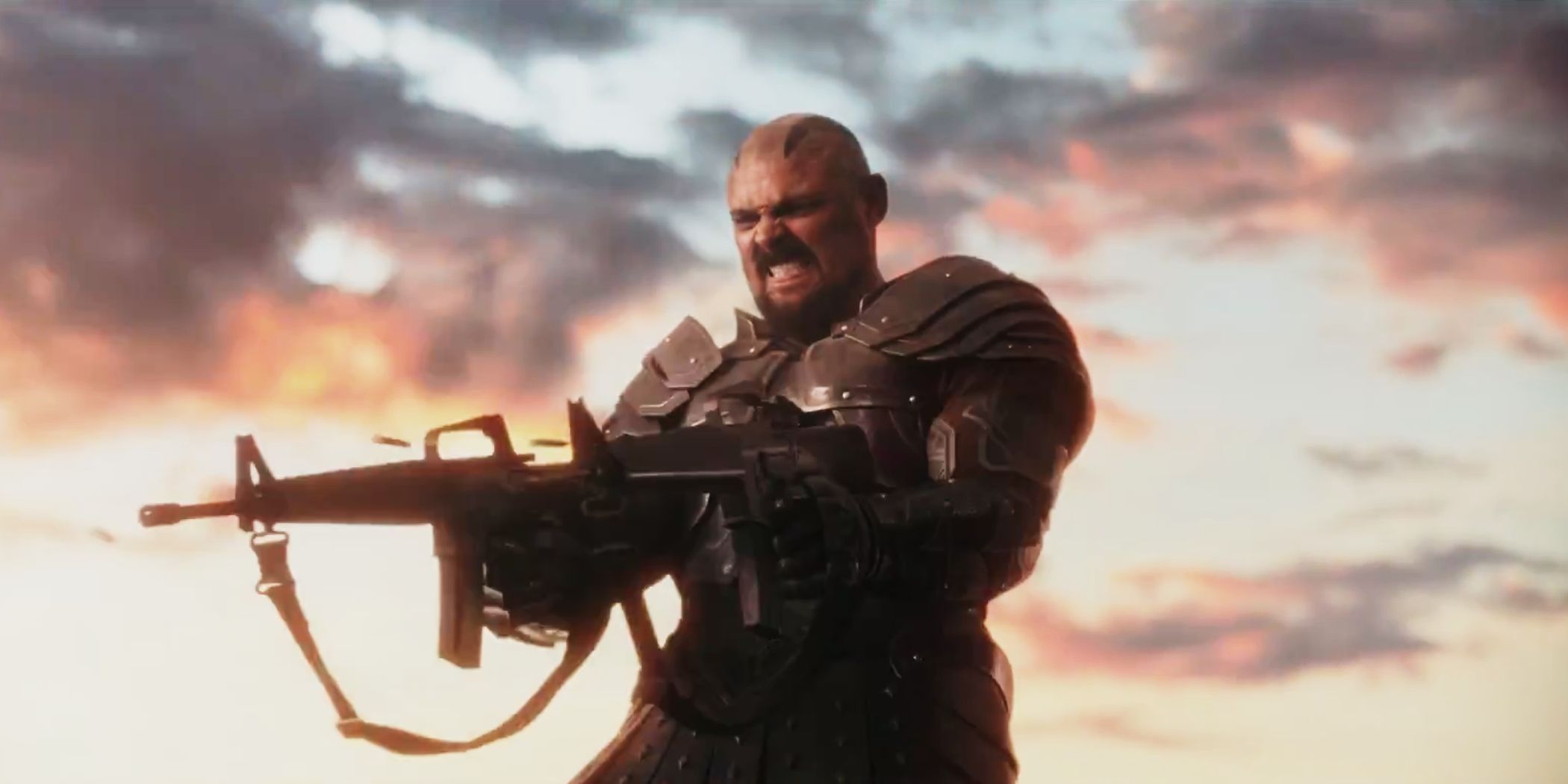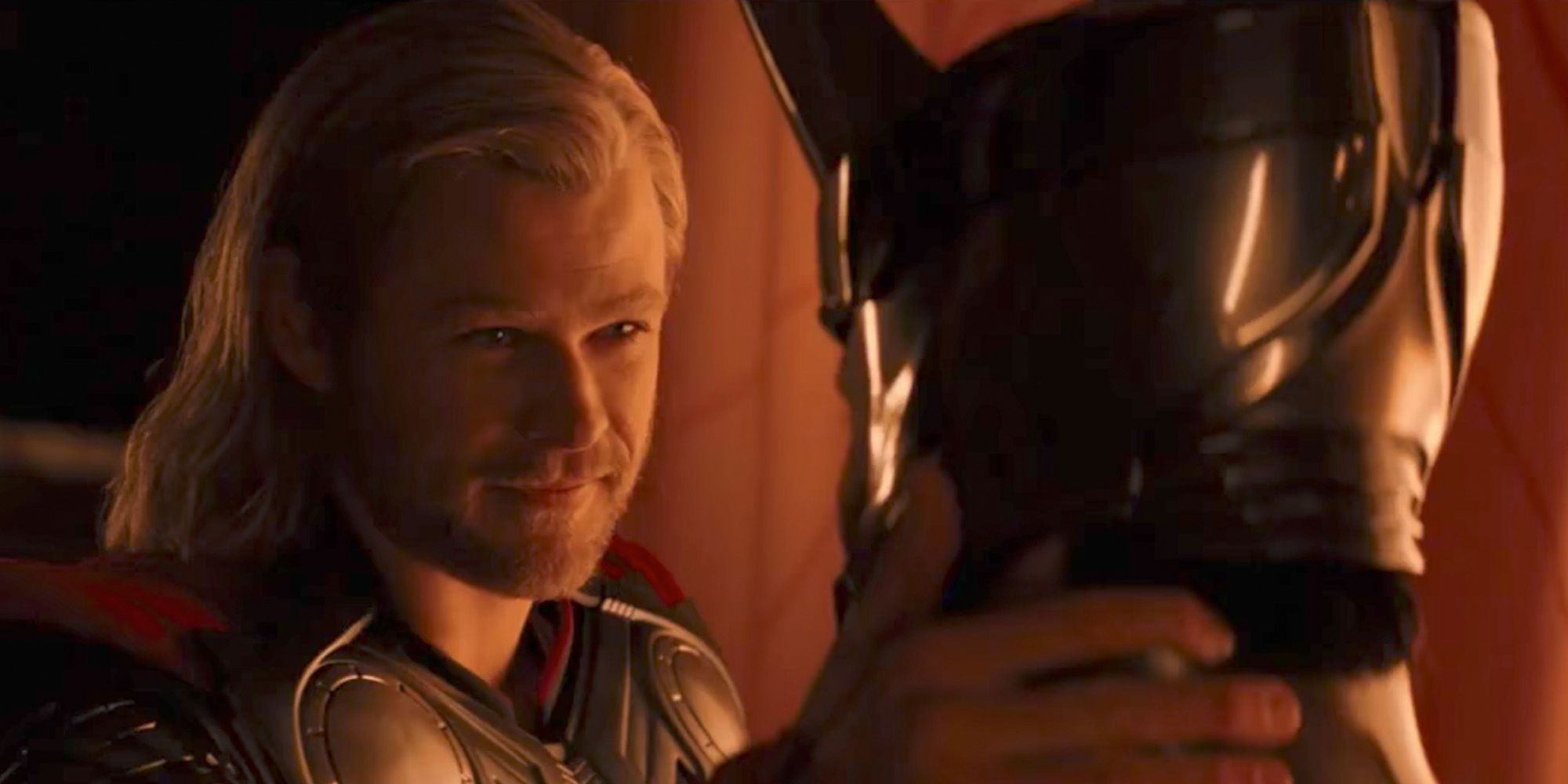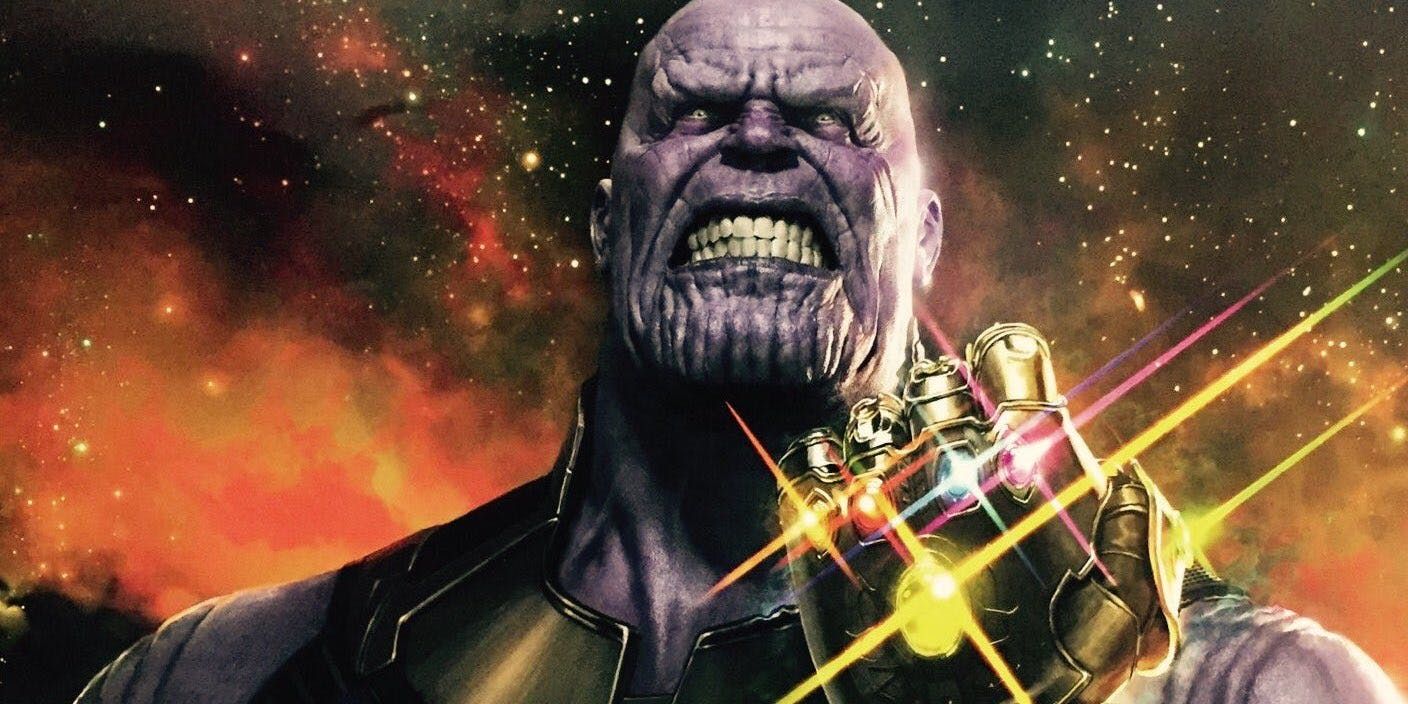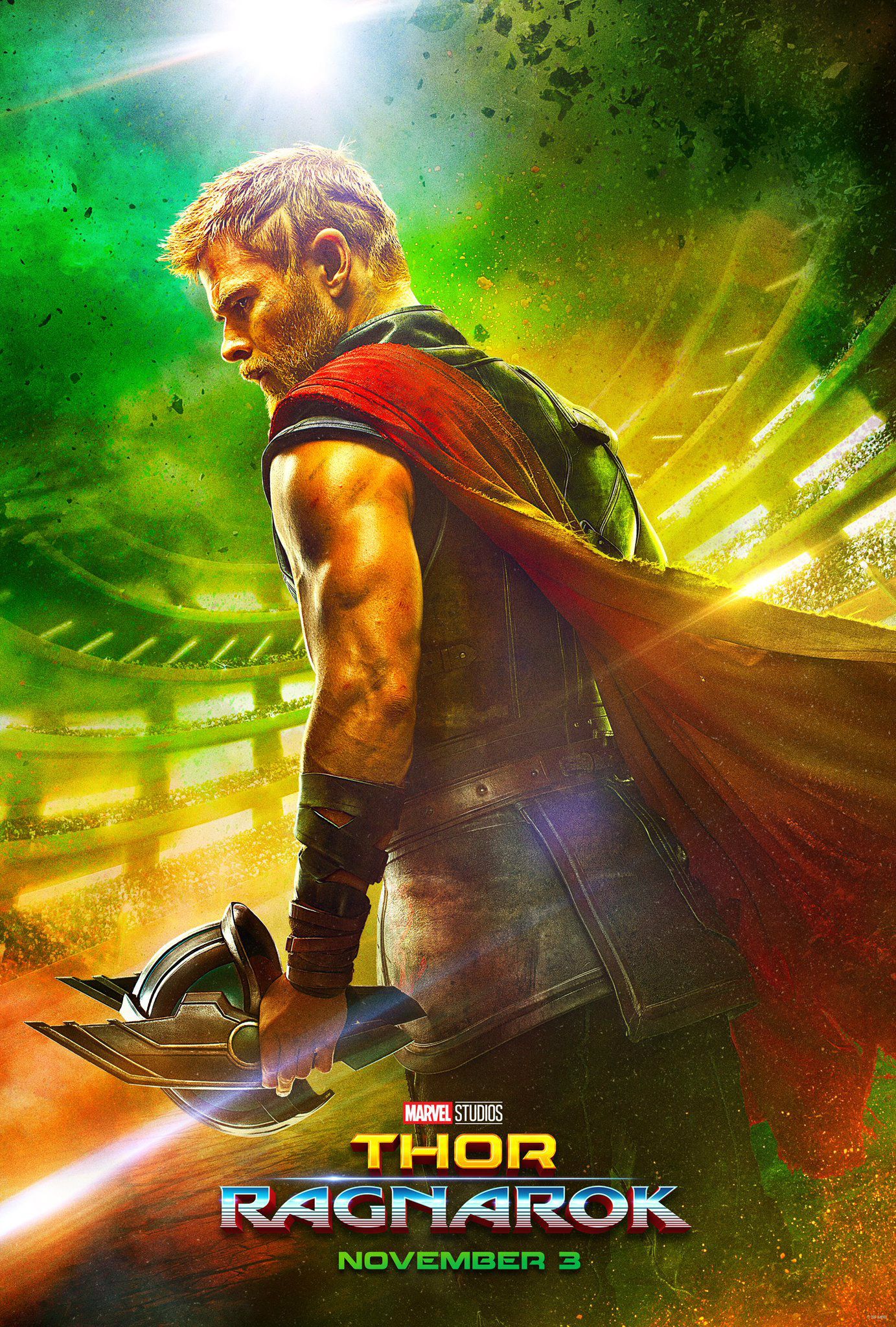WARNING: This article contains SPOILERS for Thor: Ragnarok
-
Good news Marvel fans: Thor: Ragnarok's many Easter Eggs, comic book references, inside jokes and obscure secrets and clues make it one of the richest trivia hunts in the Marvel Universe. Previous movies in the Thor series gave plenty of ammunition for speculation and mysterious connections through Marvel's cosmic mythology, from far-off villains and even a replica of the Infinity Gauntlet before fans knew to look for it. But with the arrival of Ragnarok, director Taika Waititi and cast have taken the Easter Eggs to a new level.
Fans will already be thrilled by the laughs and action of the Thor/Hulk team-up, and are guaranteed to catch a few long awaited references to the richest (and weirdest) Thor comics. But with a final tally of secret Marvel nods and inside jokes numbering in the dozens, Thor: Ragnarok might just be the most Easter-Egg-filled MCU movie yet.
So without further ado - and a warning that SPOILERS are coming - let's get started.
RELATED: Thor: Ragnarok's Biggest Spoilers & Reveals
40. Surtur & The Eternal Flame
Fans of the Thor franchise have waited YEARS to finally see the god of thunder travel to the realm of Surtur - having been planned in prior films and video games - and in Ragnarok, the journey is made. Viewers don't actually get to see that journey made, but meet up with Thor after he's already been imprisoned in the Hell-like realm of Muspelheim. It's a voluntary imprisonment, as it turns out - all part of Thor's scheme to get a personal face-to-face meeting with Surtur himself. And when he does, he discovers the secret of Surtur's role in Asgard's destruction (also known as "Ragnarok").
For newcomers or non-Marvel comic readers, the motivations or nature of Surtur is impossible to know. But the movie nods to the source material, while explaining it a bit more clearly. In the comics, it's actually Surtur's sword, not his 'crown' that is key to his power. The movie adapts his claim that being reunited with the Eternal Flame in Odin's vault will grant him incredible power - but in the comics, it's returning his weapon to the flame that holds the secret to his cosmic conquest.
Either way, the fact that the Eternal Flame has been stolen from Surtur and hidden in Asgard seems to confirm Odin's own origin story. In the comics, the three sons of Asgard's King, Bor, traveled to Muspelheim as part of securing Asgard's control of the World Tree. It meant defeating the 'living fire' Surtur and taking the source of his power - the Eternal Flame - with them. In the end, two brothers stayed behind to fight and die... leaving only their brother, Odin, to return with the power of all three.
39. The Director's First Cameo
It took years to bring Surtur to screen as the last of Thor's most iconic nemeses to join the MCU, but it was handled with care. When it came time to bring the somewhat crippled, weakened, and angry villain to life in his first meeting with Thor, director Taika Waititi handled the task personally. It's Waititi's performance capture that the finished Surtur is based on, perhaps explaining why the fiery god actually plays along with Thor's preference to converse while maintaining eye contact.
The voice was replaced with a performance by veteran Clancy Brown, who has performed too many characters to ever list in a wide variety of Marvel's animated projects.
38. Skurge's Shakeweight is a DC Crossover - Really
When Thor tries to return to Asgard with help from Heimdall, the audience learns (along with the hero) that the post of 'Bifrost Operator' has been vacated by everyone's favorite bronze-eyed warrior. It's been filled by Skurge (Karl Urban), who is more concerned with impressing a pair of Asgardian women than monitoring the god of thunder's whereabouts. Mainly, by demonstrating that having the ability to go anywhere in the cosmos allows him to acquire "stuff" which he's hording nearby. When the action returns to his location, he's even further distracted by using an iconic bit of pop culture, shopping channel gadgetry: the Shake Weight.
The gag, as explained by director Taika Waititi to Fandango is that the source of that Shake Weight is actually a crossover with DC Comics... in a way. When Waititi was playing the role of Hal Jordan's best friend Tom in Green Lantern (2011) the Shake Weight was in its heyday of late night infomercials. Waititi explained to us how Green Lantern showed him the problem with superhero movies, emphasizing his role in the actual production was a small one. So small, it turns out, that the Shake Weight was a prized souvenir - making its inclusion in the movie a Marvel/DC movie crossover:
"So I was in New Orleans and I was in Green Lantern, but I was barely doing anything. I’d be in my hotel room and it’d be like 1 AM, and the infomercial for the Shake Weight came on. I was like, 'Screw it! I guess I’m buying everything I see on TV tonight – I’m gonna buy knives and some sewing thing.' I bought exercise DVDs, too, but the one thing I bought that I kept was that Shake Weight… and then I had it shipped to Australia and I put it in the movie!"
37. The Hemsworth Brother Cameo
Marvel fans hoping to find out just how much damage had been done to Asgard under Loki's (disguised) rule got their answer soon in Ragnarok, thankfully showing Thor's brother was a king of neglect, if anything. Instead of keeping a watch on galactic threats, or realizing what kind of power it takes to keep the Asgardian monsters at bay, he enjoyed luxuries and the flattery of theater. Specifically, a dramatic recreation of his own 'death' - at least in the minds of everyone in Asgard - in the last Thor movie, The Dark World. And famous as he may be for deception, Loki clearly appreciates the emotion and heartbreak visible in the performance of Thor's on-stage stand-in.
It isn't just any actor doing their best impression of Chris Hemsworth's god of thunder, though. It's his older brother Luke Hemsworth, long known by primarily Australian audiences before appearing as the head of security in HBO's Westworld. We'll let fans decide if the 'Actor Thor' lives up to the standard set by the real thing, and assume Chris kept his other brother away since Liam Hemsworth's run at the Thor role almost netted him the part in the first place.
36. Matt Damon Won't Turn Down Work
The fact that the version of Thor being fictionally played in a fictional film is another Hemsworth is an amazing twist, but is obviously not the cameo that will get the most people talking. That honor falls to Matt Damon, making the trip from Earth all the way to Asgard to land the (presumably) starring role of Loki Laufeyson. Which means Ragnarok and Christopher Nolan's Interstellar are probably now tied with EuroTrip for the most unexpected appearance of the Good Will Hunting star. Fine company.
The real question for fans is whether the actor seen portraying the uncredited role of 'Actor Loki' is a resident of Asgard who bears a striking resemblance to Matt Damon... or actually IS Matt Damon. Loki's powers of deception and illusion mean it's possible that Matt Damon of Marvel's Earth was snatched up and brainwashed. That's the version of the story we're holding as canon.
35. Sam Neill's Odin
The theories were spinning from the moment it was confirmed actor Sam Neill had a role in Ragnarok, expecting such an esteemed actor to hold a significant place in the MCU. While a little disappointing to fans that no role as an Eternal, or even a cosmic figure of authority rests in the Jurassic Park star's future, the cameo is a special one. Late to the play, his sizable beard means that some in the audience might not actually recognize Neill as the theatrical version of Odin Allfather. But Loki has obviously turned to the very best to capture his father's personality and sense of ceremony (better than Loki actually can, as quickly becomes clear).
The beard Neill's sporting is surprisingly a step back from the bushy face-sweater he wore in Hunt For The Wilderpeople, the previous movie from Ragnarok director Taika Waititi. Neill was obviously called on at least in part because of this recent collaboration, resulting in a Jurassic Park reunion of Neill and Jeff Goldblum (even if they never get to share a scene).
34. Murder By Mjolnir Returning?
At this point audiences have seen Thor kill dozens, if not hundreds of enemies living, dead, or artificial thanks to the Hammer called Mjolnir that he swings, throws, flies with, and fires lightning through. But Thor: Ragnarok actually finds a new way to make Mjolnir murderous, relying on the god of thunder's ability to call it to his palm no matter where in space it - or he - may be. Throwing Mjolnir into the distance and placing his hand on the back of Loki's head (whilst masquerading as Odin), Thor threatens his brother with the truth: that no power or object in creation can stop Mjolnir from returning its impossible density and weight to Thor's palm. Since Loki's head stands between the two... you get the idea.
It's a deviously clever intimidation tactic by Thor, just as it was when it appeared in Issue #359 during the legendary Walt Simonson's Thor run. In that version of the story it was a far more romantic squabble in which Thor and Loki were engaged, but the process was the same. Another Easter Egg for the diehard Marvel fans to enjoy - and a plan that worked like a charm in both cases.
33. Shady Acres Callback
The finished cut of the film may have removed the New York City scenes from Ragnarok, but some evidence of Thor and Loki's trip remains. What was removed was the pair being reunited with their father, shown as a vagrant. What remained was the pair being intercepted by Marvel's Sorcerer Supreme, Doctor Strange himself. But not before Loki led Thor to the exact place that he had left his father when exiling him from Asgard to Earth. Unfortunately, all that remains is... the remains of the senior living facility where Odin was delivered - Shady Acres.
That name is a bit of a running joke in Hollywood, after it appeared as a special care facility in Ace Ventura: Pet Detective (1994). In that movie, it was a play on the director's name: Tom Shadyac. In the years since, countless production designers have clearly agreed that 'Shady Acres' is a pretty good name for a retirement home, senior living center, or any variation thereof.
32. Mjolnir in Disguise
Some will immediately question Thor's reason for bringing an umbrella on his and Loki's trip to Earth, and others may not notice the telltale hum it emits. Doctor Strange sees through the illusion, though, seeming to recognize that Mjolnir has been given the same bit of civilian 'cloaking' as Thor and Loki. Transforming Mjolnir into an umbrella is a wise move, but it's also a terrific throwback to the original comics, when Thor carried on a life on Earth as Dr. Donald Blake. The first Thor made the first connection to the comic character, alluding to Jane Foster's ex of the same name, later used as cover for Thor's civilian identity.
The reason Ragnarok surpasses that bit of fan service? In the comics, Donald Blake carried Mjolnir around disguised as a cane. When trouble struck and demanded the emergence of the god of thunder in all his glory, he would tap the cane forcefully to the ground and be revealed in a magical burst. When Thor and Loki are ambushed by Hela, the hero follows suit, slamming down the umbrella and dispelling the illusion in a blast of lightning.
31. Hela Turns Tables on Loki
All things considered, Thor and Loki take the surprising news that they've got an unknown, secret, imprisoned, murderous sister quite well. It's a good thing, too, since she shows up to try to kill them not long after. But not without first giving them the chance to show their loyalty to her power, arriving with a simple demand: "Kneel." Thor takes time to weigh the situation as it's developing... Loki, on the other hand, already knows whether or not he's capable of taking a knee to a sister he just met. But his exasperated response is also playing on his own introduction style, circa The Avengers.
For those who may not recall, Loki made the exact same demand when first revealing himself to the people of Earth in Germany. There wasn't an opponent powerful or proud enough to give the same indignant response then, but Loki reacts exactly as one would expect. Definitely a more subtle callback than his joy at seeing Thor take a Hulk-pumelling, but just as good.
30. A Song For Frigga
As mentioned before, the decision was made in post-production to tweak the final conversation between Odin and his two sons. Originally contained in a New York City alley with the deposed king dressed in shabby clothes, the film swaps in an idyllic Norwegian cliffside, with Odin dressed in crisp linen. The decision was made, according to Waititi to give a bit more weight and emotional value to the scene, and it's easy to see why. When Odin gives his sons a final bit of advice and counsel, he claims his time is nearly at an end, before dissolving into a burst of golden dust, and floating off into nothingess. Making it not one, but two parents the sons have now lost.
Those wishing to see more emotional impact called out with respect to family should pay closer attention on their second viewing. Even if the lingering loss of Frigga isn't called out by the characters, the music does it beautifully. During the play put on by Loki in Asgard, the death of his fictional counterpart is accompanied by what sounds like Frigga's funeral music, as composed by Brian Tyler for Thor: The Dark World.
29. Odin's Infinity Gauntlet is a Fake
Once Hela has tossed aside Thor and Loki like mere nuisances and returned to Asgard - the source of her power - she beings to tear down the myth Odin has built. Down come the paintings of the peaceful union of the Nine Realms under Odin's watch, replaced by the blood and war that really made it happen. The same goes for Odin's famous vault, revealed to be the opposite of its claimed purpose. It isn't a room built to house the objects of cosmic history, proudly displayed as testament to Asgard's greatness. It's a lie, built over top of the real army that gave Asgard its position. A lie Hela exposes soon after.
But it's not the only lie she reveals, strolling past the many artifacts and trinkets in the vault with mostly dismissal. That includes the Infinity Gauntlet first teased in Thor when the coming of Thanos couldn't even be dreamed of. It became a problem for Marvel Studios overnight, as fans immediately noticed that the tease didn't make sense: how could this be THE Infinity Gauntlet when it was a right-handed glove, not left? The problem compounded when Thanos was shown to put on the 'correct' left-handed glove in the post-credits scene of The Avengers: Age of Ultron. Hela clears it up once and for all, knocking the golden glove to the floor as she states that it's a "fake" version, apparently placed there by Odin to keep anyone from knowing the truth...
28. The Fenris Wolf
When Hela smashed her way through the floor of the vault to drop down to the entombed army below, one soldier stands apart: the massive, black, skeletal wolf that Hela was shown to be riding in the paintings above. That wolf is immediately referred to by Hela as "Fenris," and functions effectively as her giant attack dog in the film's third act. In the mythology of Marvel Comics, though, the story of the Fenris Wolf is a lot more complicated. For starters? The wolf isn't Hela's pet... it's her brother. Even weirder? They're both Loki's children.
Shifting Hela from Loki's daughter to his and Thor's sister may be the biggest change made to Marvel history with Ragnarok, making her an equal to them in power - and shifting Fenris even further down. While the movie sees Fenris beaten by the Hulk and washed off of Asgard, the comic book version was as powerful as Odin (and the actual Norse analogue, Fenrir, was promised to grow large enough to swallow the sun). The movie Fenris never gets to take a human form, or grow in size as the fighting builds. But we suppose battling the Hulk - who also grows with his anger and power - is a bit poetic.
27. Skurge "The Executioner"
The Marvel fans got excited when it was announced that Karl Urban's mystery Ragnarok role was Skurge, an Asgardian warrior who crossed paths with all the superheroes involved, and more. Typically, doing so while under the hypnotic thrall of Marvel's version of Enchantress, Amora. That little wrinkle meant that Skurge was hard to classify as a clear 'evil villain,' which the movie capitalizes on. Hela doesn't enthrall him to her will, but killing Thor's best friends right before his eyes has an effect all its own. The best moment comes when the character's comic mythology is honored as only Marvel can.
While standing at Hela's side after taking Asgard's throne room, she lectures Skurge on the need for monarchs and leaders to have executioners - not just to execute people, but execute "there's leader's vision." Skurge humbly accepts the role at Hela's side - finally becoming his true comic book name, Skurge the Executioner - and being given the twin-headed axe, his signature comic book weapon.
26. Valkyrie's Ship is The Māori Flag
In the marketing leading up to the release of Ragnarok, the spaceship commandeered by the 'Revengers' (owned by the Grandmaster and used to fly back to Asgard) got most of the attention, taken by many to be Valkyrie's ship. The former member of Asgard's elite guard has a ship all her own when she first enters the story though, and it isn't her murderous, arm-controlled cannons that should be noted. Instead, it's the paint scheme: red, white, and black.
Those just so happen to be the colors of the Tino Rangatiratanga flag, the symbol adopted by the Māori of New Zealand (Waititi included) to represent the island's native people. The colors are a reflection of the Māori Creation story, representing the Earth and Sky, and the level of light and being that was created when they were divided. The colors can most clearly be seen when Valkyrie lands in the scrapyard to capture Thor, as she departs her ship by walking down its ramp.
As an added bonus, the ship the heroes later escape on is also painted in the colors of the Australian Aboriginal flag!
25. The Bilge Snipe Finally Revealed?
Valkyrie makes quite an entrance with her spaceship, but her fondness for drink soon undercuts it substantially. After taking just a few steps out of the ship's door, she leans to one side and drunkenly falls into a pile of trash. The real gag comes when she tries to right herself, planting a hand on an object at her side... only to have the arm pushsickeningly into the corpse of the unidentified animal left to rot in Sakaar's wasteland. But the animal might not be a mystery at all - in fact, it could be a species teased years earlier in one of Thor's musings on his warring ways.
We speak, of course, of the legendary Bilge Snipe. It's the animal Thor compared himself and his brother to when speaking with Phil Coulson after first boarding the S.H.I.E.L.D. Helicarrier in The Avengers. He soon learned that people on Earth "don't have those," describing them as repulsive, and having "huge, scaly, big antlers" that trample everything they encounter. That's a good description of the horned animal Valkyrie meets up close, and if it is the inside joke it appears to be, then the MCU's Bilge Snipe are repulsive even in death.
24. Beta Ray Bill Finally Cameos
The green-skinned HULK of Earth may be the Grandmaster's current champion when Thor arrives on the planet Sakaar, but he's not the first. It was apparently too good a chance for Taika Waititi and the Marvel team to resist paying tribute to other Marvel warriors, specifically those who could hold their own in a fight. When Valkyrie's aircraft makes its way towards Grandmaster's tower, his love for combat can be seen in the massive faces adorning the exterior of his home - the Hulk's under-construction bust showing these to be former champions.
Among the faces is the unmistakable shape of a Korbinite skull, a race of intelligent, humanoid aliens with heads shaped closer to that of a horse than a human. Which means at long lost, the Thor movies have confirmed the existence of Beta Ray Bill in the Marvel Universe. For those who don't known him, it was Beta Ray Bill who wielded Mjolnir for a time, proving himself worthy of Thor's power until the Odinson returned to duty. At which point Bill was given a hammer of his own from Odin, becoming a longtime ally - or in the MCU, an apparent predecessor as Sakaar's star gladiator.
23. Marvel's God of War
The alien faces on the outside of Grandmaster's tower may be hard for any but the most devoted Marvel fans to spot (and even then, some exceptional memory is a must). But one profile is easier to decipher, clearly depicting a human face inside a helmet modeled after those of Ancient Greek soldiers. And as satisfying as it may be to spin out a theory on how an ancient human soldier could fall through a wormhole into an alien landscape, the answer is probably even cooler. Because the helmet bears particular resemblance to the actual helm of Ares, Marvel's version of the Greek God of War.
Mass audiences will be most familiar with DC's version of Ares, the villain of Wonder Woman, but both major comic book publishers have given their own twist on the classic deity. For Marvel, Ares was just one of the Olympians, not deities but beings that possessed the ability to exist and travel across dimensions. Since he's more reliably in pursuit of a fight than either heroics or villainy, it makes perfect sense that he would thrive in Grandmaster's arena.
22. The Mighty Bi-Beast
It isn't just supporting characters and villains of Thor comics that get a shout out in Ragnarok, but those of his co-star, too. It's for that reason that the face-- sorry, faces of another champion seem to have been built too close together. In truth, they're the twin faces of Marvel's unforgettable Bi-Beast, introduced as an enemy of the Hulk. And although he may look like an alien, Bi-Beast is actually an android, designed by an extinct race with two heads to process the world around it. The top head is the one in charge of combat and warfare, the bottom focused on culture. The image above demonstrates how well the plan worked out.
A gigantic villain at first, Bi-Beast would eventually shrink closer to Hulk and mellow out as a more understandable antagonist, at least. Which raises the question: which version fought in Sakaar's gladiator games? Were both minds equally thrilled by the combat and champion status? Is it even fair for alien fighters to be thrown into combat against a gigantic android with two brains?
21. Grandmaster's a Willy Wonka Fan
Even without his orange skin, it's easy to see why a character like Ragnarok's Grandmaster would draw parallels to the candy magnate of Willy Wonka & The Chocolate Factory (or the children's book upon which it is based). Both enjoy a luxurious life of pleasure and odd eccentricities, surrounded by painted underlings to fulfill his every whim. But when Thor first arrives on Sakaar, he's given the opposite introduction to Grandmaster that Wonka fans might expect. He doesn't introduce himself, but relies on a computer program to fill Thr in on the status of Sakaar, the Grandmaster's generosity... and that his freedom is now forfeit.
To hit the nail of Grandmaster's eccentricities on the head, the music chosen to back this induction process is lifted straight out of Willy Wonka. You can't claim that "Pure Imagination" doesn't fit with the multicolor fantasy of Grandmaster's lifestyle, but it also means at least one copy of the classic movie made it to Sakaar at some point in the past.
20. Not Valkyrie, But Scrapper-142
It was always a mystery just how Thor would take time to recognize that Valkyrie was a member of Odin's Valkyrie since, you know... it's her name. But that's solved when she enters the story and is referred to not by a name, but a designation of "Scrapper-142." It's unclear if that title is used as part of the Grandmaster or Sakaar's society, or an effort to keep Val's ties to Asgard under wraps. But what we do know is that the number is no coincidence, tying this version of the Asgardian heroine to her Marvel Comics roots.
The original Valkyrie, Brunhilde, made her debut appearance in The Incredible Hulk #142 (1971). It wasn't the first appearance of Brunhilde, but the story of her warrior persona began when Odin came to Earth to battle a brother. Realizing he needed a Valkyrie to honor and escort the fallen warriors to paradise (their purpose in the real Norse mythology) he chose Brunhilde, granting her the powers and strength of the elite Asgardian order.
19. Carlo, The Melted Cousin
As amusing as he may be thanks to Jeff Goldblum's performance, both Thor and the audience soon learn that the Grandmaster is a man to take seriously. The point is demonstrated when Thor is wheeled up next to another captive of Sakaar's ruler, and watches as the man is "forgiven" for his trespasses... and then slowly melted into a puddle of ooze by Grandmaster's scepter. The alien's story is only hinted at before it is dramatically cut short, but we at least learn his name: "Carlo." Yet another inside reference for Marvel Comics fans (and the artist being alluded to) to enjoy.
From the first rumblings of Thor heading to a far-off world where Hulk was a gladiator champion, it was clear that the 2006 Hulk comic story Planet Hulk was the inspiration. The makers of the film eventually explained why Ragnarok originally turned to Planet Hulk for its story, planning on leaving Hulk out entirely. But in the end, Hulk's role was too good to resist. That's thanks mainly to the minds behind the original comic series, writer Greg Pak and artist Carlo Pagulayan.
18. Adopted Brothers, Technically
In case any budding physicists are looking to build an investigation into the science of Bifrost, or travel through the Marvel Universe in general, Ragnarok gives a serious twist to the Asgardian means of transportation. Thor winds up on Sakaar after being knocked out of Bifrost by Hela, but only after Loki is similarly waylaid into unknown space. Yet when Thor arrives in Grandmaster's home, Loki has already spent "weeks" ingratiating himself with the eccentric ruler of the planet. Never one to waste an advantage on generosity, Loki is quick to dismiss Thor in his time of need, claiming to have never seen the god of thunder before.
When Thor responds by revealing they are actually brothers, Loki doesn't miss a beat before clarfiying the two are "adopted." It's so small a moment, many fans may miss the callback to The Avengers, when it was Thor doing the disowning of his brother's misdeeds by highlighting the detail of adoption. This time, Loki gets the joke (and just one of many to come).
17. Korg From Planet Hulk
Finally, we arrive at director Taika Waititi's second role in Ragnarok, and a much more substantial one at that. When Thor is thrown into the prison cells holding Grandmaster's gladiators, he first meets a "pile of rocks" that turns out to be an actual thing, a living being named Korg. It's only fair given his role in the Planet Hulk comic story, but the version adapted to film this time around is a far cry from what most fans expect. Especially since Kronans have been portrayed as mainly warring creatures in both Thor: The Dark World and Guardians of the Galaxy Vol. 2.
In Ragnarok, fans get an ally Waititi claims is based on the attitude and demeanor of Māori bouncers. Soft-spoken and possessing a kind soul, far sweeter than the original. There he was a warrior alongside Hulk, but with Kronans making their debut in Journey Into Mystery #83 - the same 1962 comic that introduced Thor - it's poetic that he should now be the god of thunder's best friend.
16. And Miek, Too!
Korg also introduces the MCU version of Miek, an insectoid warrior who also joins up with Thor and Hulk in their adventure, as he did in the original Planet Hulk comic. Unfortunately, or incredibly fortunately, the movie version strays from the comics in the best way possible. Miek is still "insectoid," but instead of being a largely-humanoid creature, he remains a small slug-like being piloting a dangerous exosuit. One that Korg describes as giving him "knives for hands," which is a major promotion from his original version (which just gave him hands for hands). But fans may have more than just another fakeout-death scene to look forward to from Miek.
In the comics, he was a native of Sakaar, which seems to have been changed for Ragnarok (making Thor's question of what planet Miek comes from a small joke in itself). But the real twist comes when Miek unexpectedly evolves into a "King" version of his species, growing in size, strength, and attitude. But can the MCU handle another adorable, ever-evolving, alien outlaw? Look out, Groot.
15. "The Incredible, Savage H--"
The heroes of the MCU are already known by their simplest names to even casual fans: Thor, Cap, Hulk, Widow, Stark, etc. But it always makes the comic fans in attendance smirk when a character will vocalize their FULL comic book name. Ragnarok makes sure to reference "the might Thor" but it's the Asgardian's coincidental ally who gets not one, but TWO winks to his comic book roots. The first comes when Loki informs his brother that their paths may finally diverge between the living and the dead, having heard that Grandmaster's champion is an "astonishingly savage" enemy - too much even for the god of thunder.
That's a nod to Banner's time in the comic series "Savage Hulk," albeit more subtle than the main event which follows soon after. As the Grandmaster announces the fighters, he makes theater of the champion's reveal, drawing out his arrival by dropping the arena's floor and heaping praise on his favorite gladiator. His final words welcome "the incredible..." with Banner's arrival completing his official moniker more literally that usual.
14. The Stan Lee Cameo
The cameos of Marvel icon Stan Lee were taken as a beloved trademark even when no fictional explanation was offered. But that all changed in Guardians of the Galaxy 2 when Lee was shown on what looked to be Earth's Moon, discussing his escapades in the Marvel movies with a group of Watchers - cosmic beings charged with overseeing and... well, watching life throughout the universe. The lack of attention paid by the Watchers ruled out the possibility of Stan Lee actually being Uatu, Earth's Watcher (as some fans theorized). The answer instead was that Lee was an informant for the group, and in Ragnarok, he's heading far away from Earth yet again.
The most head-turning part of Thor: Ragnarok's marketing was a look at Chris Hemsworth's new Thor costume, mainly the lack of his flowing gold locks. The change may have just been to get Hemsworth out of the make-up chair for the required wig work, but it's made all the sweeter with the reveal that it's Stan Lee cutting off the locks (with a nightmare set of spinning blades where his hand used to be).
13. The "Contest of Champions"
The amount of deep Marvel Easter Eggs for only the seasoned fans just keeps growing, when Grandmaster reveals that his system of gladiator games and challengers facing off against Hulk is given the official name of the "Contest of Champions." It's a straightforward name, so casual viewers can grasp the meaning, but the Marvel fans know it's a nod to the very first limited series the publisher released, 1982's Marvel Super Hero Contest of Champions. And beyond the name, the series itself involves most of the main players in Thor: Ragnarok... though in very different roles.
The event series is actually a massive game of chess using the heroes of the Marvel Comics Universe as the pawns, being strategically selected and played by the cosmic beings Grandmaster and Death - variations on the same Grandmaster and Hela, Goddess of Death used as antagonists in Ragnarok. In that story, it was a wager to resurrect the Grandmaster's brother, the Collector. A character who has been introduced in Guardians of the Galaxy, but sat the movie version of 'Contest of Champions' out.
12. Jack Kirby's Art Comes To Life
Everyone involved with Ragnarok was quick to point out that the colorful, alien, eccentric visual style being praised in trailers and marketing was a credit to Jack Kirby, the legendary artist who largely defined comic book art for decades. It was his work with Stan Lee that was turned to for inspiration and homage with Thor's trip into space, and his love of geometric architecture, over-designed backgrounds and odd armor and helmets is visible everywhere in Sakaar. Including behind Loki when first taking in the battle between Thor and Hulk.
In fact, the background is an exact replica of the artwork seen in Fantastic Four #64 (1967). The story followed Marvel's super family onto an alien world where they encountered a killer Kree sentry - the titular "Sentry Sinister," which may or may not have any direct link to the story Taika Waititi is telling. But it's a panel that captures the Kirby aesthetic which shaped Sakaar from its first designs, whether it's on the printed page or the wall of a Hollywood movie set.
11. "Sun's Getting Real Low..."
Having spent two years in control of their shared psyche, Hulk seems to be impossible to calm down or defeat by the time Thor crosses his path, shocked to see his former friend trying to kill him. One of the best laughs of the movie comes when Thor remembers one way to stay the beast's rage: by playing the part of Black Widow (Scarlett Johansson). Extending his hand to softly brush Hulk's palm while telling him in a warm voice, "Hey there big guy. The sun's getting' real low." Some may have forgotten that it's the line used more than once in The Avengers: Age of Ultron to show how far Banner and Widow have come in establishing a connection - strong enough to even talk him out of his rage and back into his human form.
It's less of an Easter Egg than it is a callback and extension of the MCU storyline, but its own origin is an interesting one. Joss Whedon explained during press for Ultron that it all started when he realized the common ground shared between Bruce and Natasha, and wondered 'What if she was the only one who could share his nature enough to break through to him?' The rest of their story built from there, but the line itself ia a bit of a mystery.
The top candidate? It's possible it's a reference to The Bible's Ephesians 4:26, which commands that "In your anger do not sin: Do not let the sun go down while you are still angry."
10. Hulk's New Outfit
Despite his claims to the contrary, it's Hulk who puts a decisive end to his battle with Thor, pummeling him into oblivion in the floor of the gladiator arena. When Thor comes to, he realizes the life of luxury that Hulk has won as the Grandmaster's champion. A Hulk in a hot tub is a visual few will forget (including those with a view into his massive apartment windows), but fans should also pay close attention to Hulk's new clothing and jewelry. Rich fabrics wrapped around his waist show his shift from Earth culture to something more in keeping with his 'savage' warrior reputation, and the beaded necklaces around his neck are the mark of a true champion.
That's a design that will ring a few bells immediately for seasoned fans of the character specifically, since it's almost a perfect match for his look in the Ultimate Hulk continuity, best known for the battle between him and his other title hero, Wolverine. Ultimate Hulk vs Wolverine is probablt best known for the moment that the green meanie tore Wolverine in half and threw them miles apart, but... he's got the beads and skirt, too!
9. The REAL 'Revengers'
When Thor pairs up with Bruce Banner (thankfully returned to his human form) in hopes of escaping Sakaar and returning home, he makes a pitch to get Valkyrie on board as well. Selling their trio as a budding superteam, he even gives their group a name on the spot: "The Revengers." Hard to give points for originality, since he's taking the "Avengers" brand and repurposing it to emphasize the vengeance driving their mission. But it's not the first time that a team has operated under that name in the Marvel Comics Universe, and it deepens a connection he holds to another artificial hero in the MCU.
The 'coolest' use of the Revenger name for many will be the hero team of Marvel's Earth-10011... otherwise known as "The Cancerverse." In that reality, Death was defeated turning all life into an undead nightmare version of their heroic identities - meaning the Avengers became the Revengers, Thor included. But the version of the team created in Marvel's main universe was comprised of heroes fighting under Wonder Man (against other heroes... it got ugly). Wonder Man was actually the character whose mind was used to create the Vision, but even if the MCU version created Vision from Jarvis, he took plenty of cues from Thor. Only right that the god of thunder get to adapt another of Wonder Man's stories.
8. "Refuel on Xandar"
Since the cosmic corners of the Marvel Cinematic Universe are inhabited by so many characters with serious potential - in both the Thor and Guardians of the Galaxy franchises - it seemed too good an opportunity to pass up. Nevertheless, there just wasn't room for the two movie franchises to overlap characters beyond cameo roles in credits sequences. However, we do get a line confirming that the planets involved in Star-Lord's story register on the radar of Asgardians. Even if Valkyrie bringing them up raises some questions about the efficiency of interstellar travel in the MCU.
When Valkyrie finally agrees to go with Thor and help 'save Asgard' (or simply get revenge on Hela for killing her sister soldiers), she estimates how long it will likely take. It turns out Bifrost is more of a secret weapon than is communicated, since the trip from Sakaar to Asgard would apparently take eighteen months traveling conventionally, stopping to "refuel on Xandar" along the way. That's the capitol world of the Nova Corps that the Guardians helped defend in their big screen debut, dropped so fast most viewers may miss it entirely.
7. Throg Exists in The MCU?
Now, the Easter Egg sure to surprise more than any other on pure absurdity alone. Taika Waititi fills Ragnarok with clever references to Thor and Loki's past, alluding to misadventures and sibling rivalry that lets imagination do all the legwork. One such recollection involves the time that Loki turned Thor into a frog, a visual that is as humorous as it is unsettling. But it's also true: Thor did turn into a frog in his comic book history, which opened the door to one of the god of thunder's universe's strangest stories: Throg, the Frog Thor.
To be clear, the story actually followed Thor in his transformation into a frog for reasons unrelated to his brother (directly). It ended with Thor helping to defend a family of frogs from a pack of rats, before eventually reclaiming Mjolnir and his human form. It just so happened that one of the frogs in the story was a human being cursed by a witch... who still remained "worthy" of Thor's hammer. Picking up a single shard of Mjolnir, that frog was blessed with a fraction of its magic, transforming the hammer into the miniature Frogjolnir, and the frog into the mighty Throg. Look for his adventure in the Pet Avengers of Marvel.
6. Thor's Love of Snakes
Not all such stories are as harmless as transformation into a frog, and when you're dealing with a brother like Loki, things can jump up a notch or two quite quickly. Take Thor's other anecdote, in which Loki turned himself into a snake so that Thor would lovingly pick him up (since Thor loves snakes) only to transform back into his human form... and then stab his brother. A short story that pays tribute to more than one Thor story, character, and comic.
The mere mention of snakes in a Thor movie is enough to get fans squealing, given how large a role the Midgard Serpent plays in the stories of Asgard for both Marvel and the Norse mythology. For starters, the Midgard Serpent is the child of Loki (sibling to Fenris and Hela), and is prophesied to die during Ragnarok in combat with Thor, having poisoned him as well. Thor's love of snakes will get him into trouble should that happen in the MCU but he did alright when a similar stunt was pulled in the comics, being tricked into raising the Midgard Serpent after it was disguised as a housecat.
5. Aussie Spaceship Names
Director Taika Waititi made sure to get several of his regular collaborators into small or cameo roles in Ragnarok, in addition to the flag of New Zealand's Māori. But his affection clearly includes the Australian vehicle manufacturer Holden, naming several of the spaceships referred to by name in Ragnarok after models of Holden cars.
There's the Holden Commodore, the 1978 sedan which is used for the name of the Grandmaster's personal... 'pleasure' ship due to its ability to endure the Devil's Anus. The Commodore actually replaced the Kingswood, which is also used as a name for a spaceship. The Statesman is the name given to the massive ship stolen from Grandmaster to evacuate Asgard, with the Torana rounding out the bunch. Just one of many Easter Eggs placed into the film so that Australian and New Zealand audiences would be guaranteed to catch them.
4. Brunhilde, The Valkyrie
One of the bigger changes made to Thor's mythology is the decision to make the Asgardian hero Valkyrie into an elite fighting unit of heroes, with the name 'Valkyrie' referring to a rank, more than a specific name. It's more in keeping with the real Norse mythology upon which Marvel based their version, where the Valkyrie were powerful, fearsome figures that escorted warriors into the next life. The sad news for Marvel Comics fans was that the shift meant saying goodbye to Brunhilde, which was confirmed when actress Tessa Thompson landed the previously-Caucasian role (leading to reactions that all involved soon dismissed, stating Thompson's talents were more convincing than any skin tone).
That being said, fans shouldn't miss the possible details in the explanation, offered in the flashback sequence triggered by Loki. Placing his hand on Val's head, Loki sends her back to that battle against Hela, and how it wiped out every other member of the Valkyries. She only survived because her sister soldier - a tall, blonde, fair-skinned Valkyrie - took a killing blow in her place. Almost certainly the MCU's Brunhilde, for those longing to see her for even a second or two.
3. Skurge's Last Stand
It's not every character who can spend a movie's running time as the villain's top henchman, and still be seen as something of a hero. But if anyone deserves that treatment, it's Skurge, former master of Bifrost and eventual (coincidental?)Executioner to Hela of Asgard. The warrior who once fought at Thor's side seems permanently unsure about Hela's course, ultimately choosing to side with his Asgardians brothers and sisters against Hela's forces. And that's exactly how things went for Skurge in the comics, sacrificing his life to save his people in Thor #362 (1985).
The circumstances were slightly different, but it was still the heroes of Asgard vs. Hela, and a coming wave of demonic enemies needing to be held at bay if the innocent are to survive. In the comic Skurge knocked out Thor so that he could stay behind and delay the enemies (M-16s included) and guarantee that his name would be sung for all time as the one who would not flee. The one for whom "even Hela bows her head." A glorious way to go, if there ever was one.
2. Thor's Coronation, At Last
It may seem like years since audiences first met Thor (for obvious reasons), but it's harder to remember just how far he has come from his first appearance. When introduced in the first Thor, the god of thunder was arrogant, entitled, and completely ignorant to the true demands and criteria of a great king. In fact, the first shot of Thor in Asgard showed him proudly marching towards his coronation as the people's new king, playfully tossing his hammer for the crowd's amusement. By the end of the film, he had learned what it truly meant to be king... and decided he had not earned the rank.
Ragnarok changes all that, finally making Thor the King of Asgard. Nobody would have guessed that when he finally ascended to the throne, 'Asgard' would represent only the refugees who once called it home, with the realm disintegrated by Surtur. Yet Thor takes the throne all the same, leading his people through the stars to their unknown home. And as he does, the music used for Thor's coronation finally plays, honoring the Asgardian prince who, this time around, is truly ready to lead. A subtle detail, but on fans will want to catch.
1. The Arrival of Thanos?
The post-credits scene showing Grandmaster deposed and probably moments away from being killed by his former underlings is worth a laugh, but it's the mid-credits scene that actually lays the foundation for The Avengers: Infinity War. With Thor sporting his new, all-black Asgardian armor and leading his people to an uncertain future, their journey is cut short when a spaceship stops them in their tracks. For those going only by what's shown on screen, it's a surprise contact with a mystery ship and enemy - or ally, just as likely.
But for those looking to see how Ragnarok connects to Infinity War and the larger MCU story, that ship's commander is clear: Thanos. At least that's the most obvious explanation, with the prologue for Infinity War showing Thor floating bruised and beaten through space until running into the Guardians (literally). Hopefully, it was only him who took the beating. Otherwise, the odds don't look good for the spaceship and Asgardian remnant that surrounded him when Thanos first arrives.

